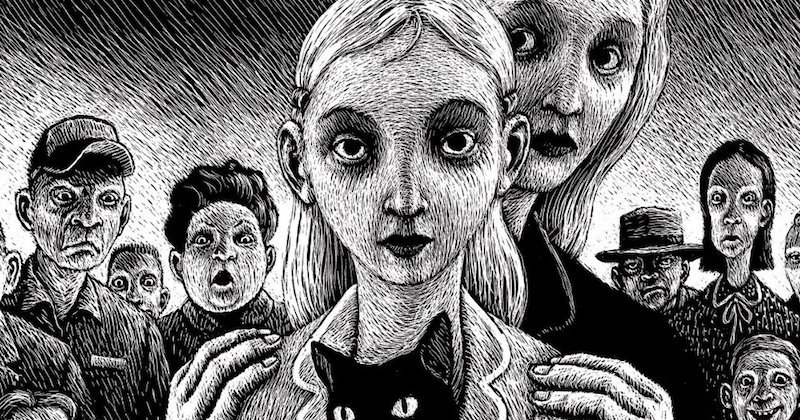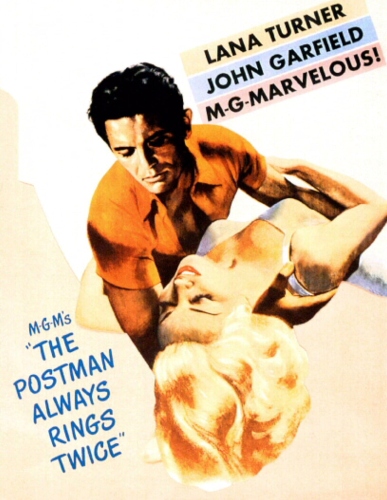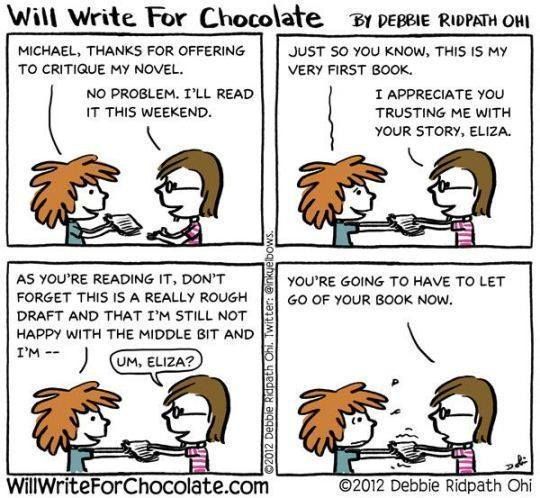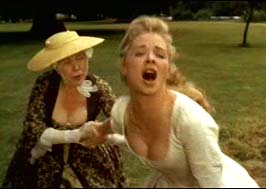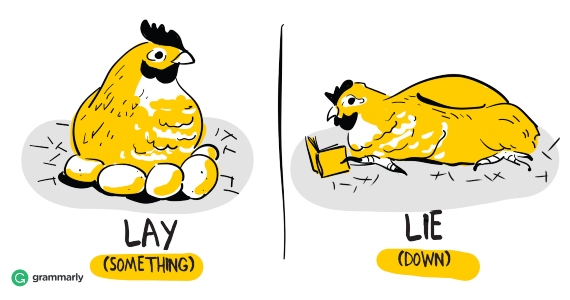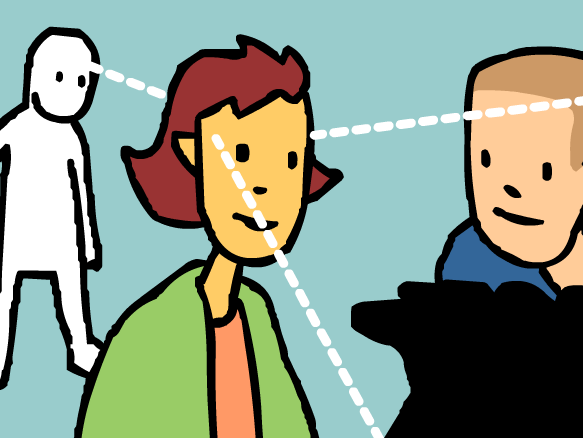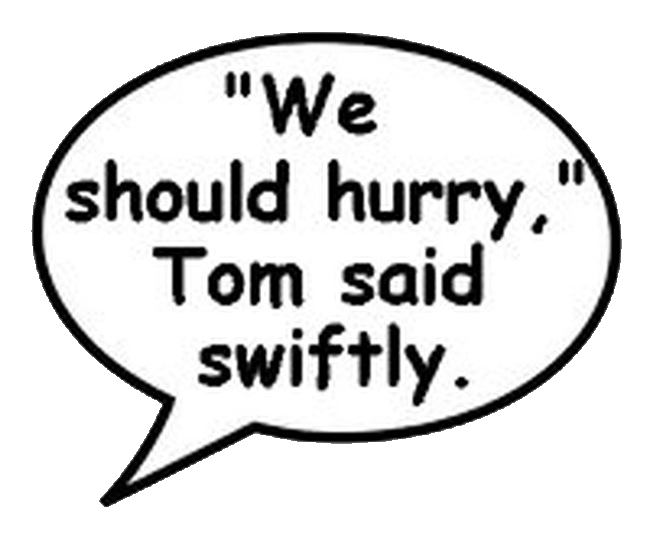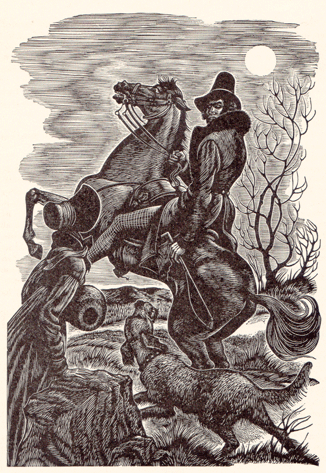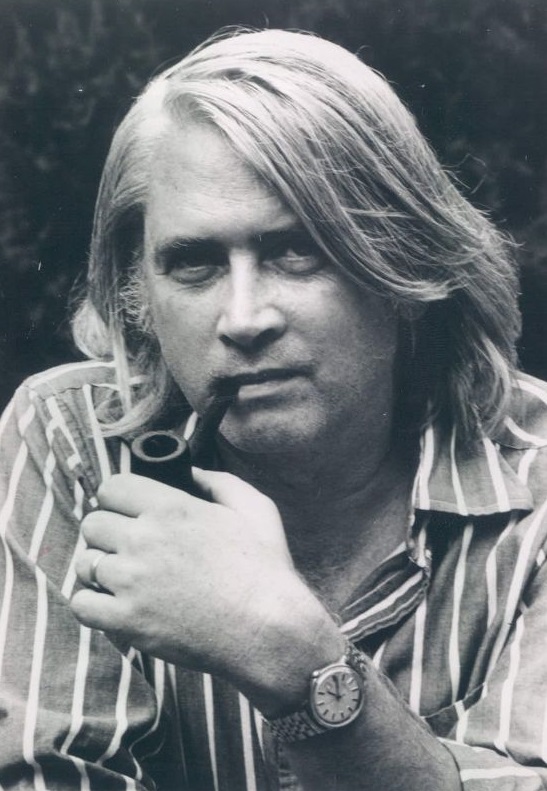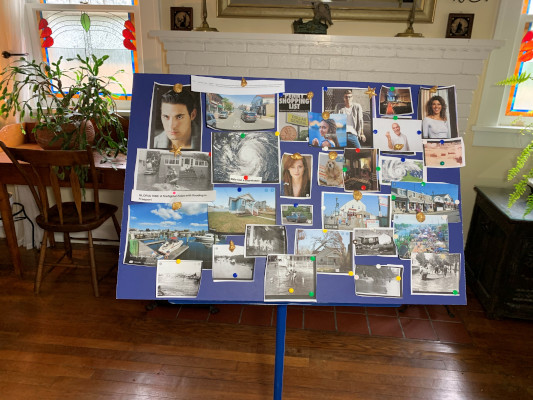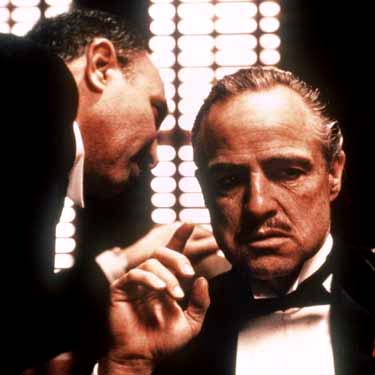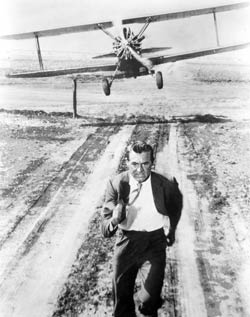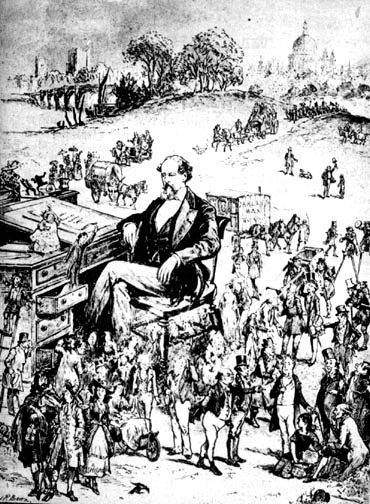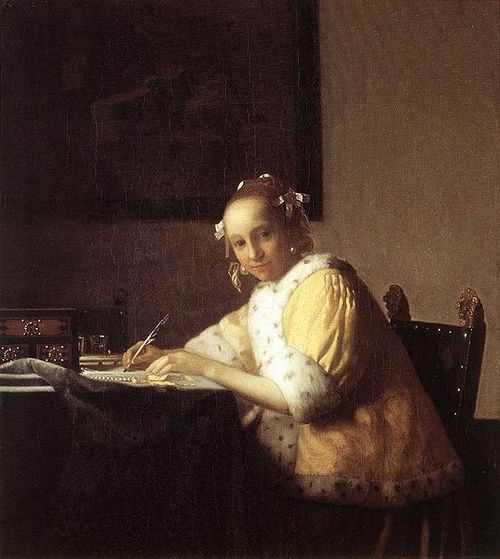NYU Novel Writing
Spring 2025 WRIT1-CE9357 OnlineNOVEL WRITING
WRIT1-CE9357 Novel Writing (Spring 2025)
2-12-25 to 4-16-25
10 Wednesdays 6:30 p.m. to 8:50 p.m.
Synchronous online by Zoom
Instructor: Meredith Sue Willis (She, her, hers etc.)
E-mail: meredithsuewillis@gmail.com
Updated 4-16-25
Good Luck with Your Novels!!
This page will be available for you to read materials and copy .pdf's through June 16, 2025.
MSW's short-short story "Recessional" now up at Raven's Perch.
Please note that this site changes often during the semester based on what I perceive to be the needs of the students. The url for this page is here . Or, you may go to my website www.meredithsuewillis.com and scroll down four lines to NYU Novel Writing Spring 2025
You should check for updates at least once a week.
Current Week's Class Plan is posted by Noon of Class Day
Optional Text for this Course: Ten Strategies to Write Your Novel by Meredith Sue Willis. This text is not required. It is, however, available at the NYU Bookstore, from the publisher, and from all the usual online suspects including Bookshop.org.
Current Class
Presentation/Critique Schedule
Pick a date to present your work for class critique.Writing Assignment Due
Reading Assignments Due
Overview of Weekly Topics
Some Books and Writers I've Been Reading Lately
We Have Always Lived in the Castle (Shirley Jackson); Cherrie Moraga; The Postman Always Rings Twice (James Cain);
Percival Everett (James); Elmore Leonaard, Leila Limani; Edith Whatron
Writing a Novel
Tom Robbins (author of Even Cowgirls Get the Blues), who died this week, said to The Seattle Weekly in 2006, “I don’t know how to write a novel....I couldn’t tell you how to write a novel; it’s a new adventure every time I begin one, and I like it that way. I rarely have even the vaguest sense of plot when I begin a book.”
For the First Day of Class:
1. Required: The first page of your novel--a sample of your writing
This is partly for the class to get a taste of your style. It is also, however, if you haven't written the first page yet, a excellent way to begin thinking about your novel.
Turn this in by midnight of class night: 2-12-25. It will be distributed to all members of the class as a quick means of getting a sense of your work.
This will not be critiqued or marked up.
2. Optional: Some things to read before the first class--or any time,
Dialogue punctuation: Six "unbreakable" rules for dialogue punctuation.
Pros and Cons of Present Tense
Susan DeFreitas on Character Arc
Cynthia Swanson on going from best-selling commercial author to self-publishing.
Article in Psychology Today that discusses some fiction writing techniques in light of neurology. It's a refreshingly different way of looking at things. Author Laura Otis says, "Deciding which confrontations readers should experience in real time and which should be quickly summarized goes to the heart of the writing process."
Finding your novel's clock: from Literary Hub.
Writing ideas from Kurt Vonnegut collected by Suzanne McConnell in her book on Vonnegut.
FYI: Samples of MSW's fiction online
"Rescue," Sleet Magazine
"The Sweetest Man Who Ever Lived," Cold Mountain Review 2023
From novel Their Houses
"Fan Fiction: Paradise Lost," Maryland Literary Review
"Grandma Shiksa," Persimmon Tree
"Feral Grandmothers: Little Red's," Persimmon Tree
Overview of Probable Weekly Topics (Subject to change)
Week 1. 2-12-25 Lots of Business. Introduction to novel writing; introduction to each other. Micro- macro; process & product; narrate versus dramatize-- and other pairs. Essential Importance of the Senses for writer and reader. Places, People.
Week 2. 2-19-25 Point of View. How you tell your story, and how we talk about novels (vocabulary and critiquing).
Presentation of Student Work for CritiqueWeek 3. 2-26-25 Dialogue and Scene I: Writing Vivid Dialogue; when to dramatize.
Presentation of Student Work for CritiqueWeek 4. 3-5-25 Dialogue and Scene II: Challenge of the group scene. Monologue and other forms of inner speech.
Presentation of Student Work for CritiqueWeek 5. 3-12-25 Structure I: Importance of "Big Bins" in novel writing.
Presentation of Student Work for CritiqueWeek 6. 3-19-25 Structure II: When, How, & If to Outline.
Presentation of Student Work for CritiqueWeek 7. 2-26-25 Things Novels Do Better than Movies and Things Novelists Can Learn from Film.
Writing Physical Action.
Student Work for CritiqueWeek 8. 4-2-25 Arc of Character and a Short Presentation on What To Do Once Your Novel is Written.
Student Work for CritiqueWeek 9. 4-9-25 Revision I: Diction and Fine Tuning.
Presentation of Student Work for CritiqueWeek 10. 4-16-25 Revision II: Revising Novels. (Final Session)
Presentation of Student Work for Critique
Session 1
2-12-25
Introductions & Sense Detail
Introductions; Important Word Pairs (Micro-macro; process & product; narrate versus dramatize) ; Importance of the Five Senses for writer and reader.

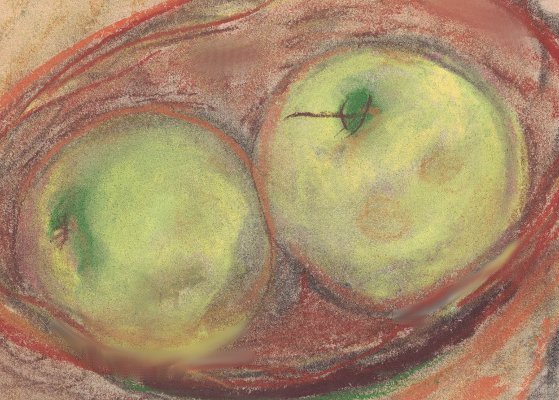
Macro and micro: the story (left) and sense description (right)
Writing Assignment Due 9-18-2
The first page--a sample of your writing--from your novel. First page is probably best, but your call.
This is partly for the class to get a taste of your style. It is also, however, if you haven't written it yet, an essential way to begin thinking about your novel.
Turn this in by midnight of class night: 9-18-24. It will be distributed to all members of the class as a quick means of getting a sense of your work. This will not be critiqued or marked up.
I. General Business
A lot of business today--apologies to those who have taken this course before.
This class welcomes beginning novelists as well as writers who are well-underway on a novel and need further discussion and stimulation to continue or restart. For those with longer or revised manuscripts, this course may be repeated. We will cover a lot of basics fast, beginning with a survey of common terms for discussing novels and a look at novel structure in general. If you feel you need more of the basic terminology and ideas, please take a look at the teacher's book, Ten Strategies to Write Your Novel.
This dynamic teaching page will be updated regularly online, so please check this web page at least once a week. Access to the website is also available from MSW's home page. Look down about four lines from the top.
All writing and presentation selections should be from the novel you're working on.
During the course, you may bring up-to 30 manuscript pages to the teacher for critique (some of these pages will be for the whole group, some only for the teacher).
Assignments are optional. You may always substitute some other pages from your novel. and go only to MSW.
Anything you turn in to MSW, however, counts towards the total of 30 pages to be reviewed during the semester. See more below.I will share your e-mail with the e class unless you tell me otherwise. I will also put you on my personal list for a free newsletter and announcements about my teaching and work.
When other students present their work for critique, please be prepared to discuss the work of classmates when they present.
You will receive a grade for this course unless you request a Non Evaluative mark. For the Non-Evaluative, please see the attached form. A copy of this request must be filed with the department. Send it by e-mail to .
No letter grade will be given below a B. To earn a B, you must attend regularly, complete 30 pages to the professor's satisfaction plus present work for critiquing by the class at least once. To earn an A, you must attend regularly, complete the 30 pages, present work for critiquing twice, if slots are available, and show evidence of having done any outside reading, plus participate in class discussions.
It should be noted that all NYU policies on academic integrity, i.e., plagiarism, are fully in effect in this course. For various NYU policies, click here.
Disclaimer: Syllabus is subject to change due to current events, guest speaker schedule changes, and/or level and interests of students.
Non-evaluative Grade Information: if you don't want a grade, you must follow these instructions.
Planned weekly topics.
Sign up for class critiques. Here's the calendar. Pick one slot, and send your choice to MSW.
Pick a session to present 5-10 pages to the class. Everyone should read the material BEFORE class (it will not be read aloud), and the presenter needs to e-mail .doc files to everyone by Sunday night of the class you are presenting on.
Send MSW by chat or e-mail: your snail mail address; names you want to be called; corrections to e-mail, corrections to page or broken links or an other things of that nature.
Material you send in for response ("Homework"). There are three kinds:
1. The weekly assignments should be @ 2-3 pages long (double spaced, font like 12 pt. Times New Roman). Using my assignments is not required, but it's a good way to move your novel forward.
These pages are sent only to MSW.
They are due on the day of class (thus, the "Writing Assignments due" for Session 2 are due up till midnight Feb 19, 2025. If they don't arrive by then, there is no guarantee they will be returned by the next session.
Instead of sending a few pages every week, you may also send longer chunks once or twice (or whatever you choose, as long as it adds up in total to no more than 30 pp). Let MSW know your plan so she doesn't get swamped at the end!
2. Substitutions: especially for people taking this class again, or who have an in-process novel--you may send any pages you want to the instructor for feedback. These pages are sent only to MSW. They are also due on the day of class. If they don't arrive that day, there is no guarantee they will be returned by the next session. Total pages to be reviewed by MSW still is 30 pp or fewer.
3. Presentation pieces for critiquing (as short as you'd like, but no more than 10 pp. double spaced, 1 inch margins, roughly comparable to 12 pt. New Times Roman Type face) are sent to the entire class.
These presentation pieces are to to arrive in people's e-mail in boxes by Sunday night before the presentation. Again, these count toward the pages MSW will review.
VIP and New:
When there is work to critique, consider this part of your reading homework. Be prepared to discuss. Please provide short written responses to the presenters. You don't have to do line editing, but you should send at least a paragraph of response.
II. Things We Do During Class Sessions:
Occasional discussions of homework readings and other topics. Not everything assigned to read will be discussed. This is partially a self-taught class.
Critique sessions of class members' novel sections.
Mini-lectures (MSW talks)
Discussion (as much as possible). Send questions if you have any.
In-class writing (short timed writings)
For general topics by week, click here.
Anything you write in or out of class should be part of the novel you are working on.
III. Zoom & Class guidelines (nothing unusual here)
- Please have your camera turned on.
-- Put yourself on mute when you're not talking so we don't have to hear your puppy, your partner, or your phone. The mute button is at lower left of the Zoom screen.
-- Raise your physical hand if you want to speak.
-- Speak one at a time--in practice, this means waiting for the instructor to call on you.
-- Try to be succinct and don't repeat what has already been said.
-- Listen and respect each other's ideas. We are writing different kinds of novels, and if possible, try to make suggestions based on helping each other write the best novel of the type they are writing.
-- Use the chat function for procedural notes to the instructor ( you got a text from a classmate who can't get in; the name of a book you couldn't think of and wanted to share--things like that.)
-- Apologies in advance: I may have to interrupt you or cut you off. I try for equal time for each person, but I also have an ambitious plan for what to cover.
-- Technical note for Mac Users on Zoom: To view screen share in Zoom at full screen, see the top drop down menu and set to "100%"
IV. Very brief go-round of introductions
Say two sentences about yourself: what you want to be called, why you want to write a novel (instead of, say, poetry or not writing at all but dancing or singing or filmmaking).
And/or: A book you think is really an ideal novel to emulate. Some area of expertise on something that might help the rest of us (were you a volunteer EMT in a past life? Do you know the rules of cricket really well?).
For tonight, let's not tell the status of our novels tonight at all.
V. Write
Using Timed Writing, write a description (not narrated but rather focusing on what can be observed with the senses--especially those other than sight) of an object that appears early in
your novel-- a piece of food, a bejeweled cuff link, a shoe, an old baseball glove. Something small enough to be held in your hand: smell it, feel it, does it make a sound?, look at its shape,color, texture. Taste it if appropriate.
Miss Jyotsna kicked her feet up in the air. (What red toenails! Jewel-like, beetle-like, beautiful red toenails!) His ears felt as if they'd been dusted with a light coating of paprika.
Just a taste of what I like to talk about in revising: take a look at See "The Lady Sheriff."
[In Timed writing, you write steadily for the given time. Write slowly but steadily. If you get stuck, repeat a word till you're unstuck. But try to keep the words coming.
VI. Share a couple?
This is one of my favorite kinds of exercise: micro, up close and personal, but it's also a kind of exercise for focus: a way to start a day's writing session. As you focus and imagine, you may come up with other ideas for your plot or backstory for your characters.
VII. Separating Process and Product
Clearly a timed in-class writing is sloppy and unfinished. It's to shake us up a little with a different time and place for writing. Maybe good ideas, maybe not. I have a flash fiction story called "Rescue" that came out of a workshop.
I've been speaking about Micro Macro parts of writing, getting very close, then taking the long view. This class is roughly equal parts Big Picture stuff (Macro) and small details of description and house keep9ng (Micro).
Another important word pair is Process and Product.
It is essential to know that what you write first is rarely the same as the beginning of your novel. Preparing the manuscript (including a passage for critique) demands different thinking from creating new material.
VIII. Extremely Mini-Lecture on the uses of concrete language, looking close up--micro writng-- which in practice often means description
Concrete description brings your reader into the story. It also brings you the writer into the story. Concrete means using the senses whenever possible. We best communicate what is in our minds by sharing the lowest common denominator: a common reference with an old friend (a teacher we had, songs from our decade)--words like red, warm, smooth, crisp, sweet, juicy. Sense details is not the only thing in fiction writing, but it is essential for those of us writers (novelists and other fiction writers!) who aren't illustrating their work or depending on costume designers and actors to give the timbre of the voice, the fabric and folds of the cloak.
Drafting lots of rich description will help you see your work more completely and clearly and may even give you ideas for new scenes, new characters, new depth! Over-write as you make your first draft. This is how description is vital for the process of writing as well as the product a reader encounters.
In your final product, get rid of most of the description you drafted. Make your descriptions as concise as possible, retaining only the very best details. See "The Lady Sheriff."
Finally, don't stick with visual detail only. The intimate senses-- touch, smell -- are extremely evocative, and not just in sex scenes. Here are two brief passages (mostly visual) from last fall's class. Even though they are both focused in their different ways on action, it is the concrete details that make them work:
-- At approximately 11:30 PM local time on Monday July 24th, two stealth helicopters entered the airspace above Brussels, their dark metal armor barely discernible from the night sky. Below the lights of the capital city bathed the streets and squares in a dull amber light. The few people left in the business district paid no mind to the choppers.
---Jenny could picture her mother's smiling face as her brothers chased each other around the yard. Her mother turned and waved at her. Tears clouded her vision as her body shook. Her knuckles turned white as she tightened her grip, and she closed her eyes. Tears slid down her cheeks.
---Here are a couple of descriptions of people that get their strength from senses other than sight.
IX BREAK
X. Things on Your mind: What are you hoping to get out of this class?
XI. A few important terms and concepts-- a common vocabulary:
For thinking and talking: Types of novels
More terms for Novel Writing
Common vocabulary--Process versus product, pacing, when to dramatize, when to elide. Essential importance of Point of View in all fiction. Scene and summary. What is Scene? Why is it important? The building block of novels. But at the heart is concrete details. Process versus product, pacing, when to dramatize, when to elide.
You'll especially need the terms for thinking about your own novel and for critiquing others' novels.
XII. SCHEDULE PRESENTATIONS FOR CRITIQUE.
This is for many people the most important part of a course like this one.
We need two volunteers for next week so we can get to it.
PLEASE GET WORK TO WHOLE CLASS BY SUNDAY NIGHT before the Wednesday of class.
Everyone: Please send me by e-mail before the next class your first choice for your first presentation.
XIII. Responding in critique sessions in this class.
For this class's presentations: Please provide at least a one paragraph written response to the writer's work. Copy me on what you send--I won't necessarily read them all, but I want a record of who is being faithful about this.
There are other ways of responding--some people like to go into Word and actually write responses in the text. That's okay too.
Personally, I usually print out, hand write and scan it back.
The short paragraph is a minimal, holistic response. It might say things like:
This is how I understand what I'm reading.
This is how I found myself responding:
I liked this,
I wanted more of that,
I was confused by....
Here's a sheet to help people critique your passage. You might want to use as a reference.
XIV. Brief further discussion: How do we talk about ("critique") one another's novels?
Lots of kinds of response:
Support groups, no response groups/classes.
What do you find useful? Not useful?
For me, it's about a general sense that a scene, character, whatever isn't working
Also when people need more information--extrememly useful
XV. (if time) WRITE--Let's end with a short Macro Exercise...about the novel you are planning/engaged in.
You're at a party, feeling loose and reveal that you are writing a novel. The person you are talking to asks the inevitable: "Oh, what's it about?"
And instead of making a joke ("Oh, nothing much--the future of humankind....."), you try to give a very brief direct answer to the question.
Make it a short answer, but include things like
genre (Fiction autobiography? Y.A. Futuristic Romance? Spy Thriller? Literary or Psychological? See "Types of Novels." );
-- how far along you are (page count, notes, whatever--be more or less honest, but don't put down what you've accomplished);
-- how long you imagine it being, and who is your typical reader;
-- what is the point of view of the main character;
-- something about the main conflict;
-- what books are people who would like your book reading? The the way Barnes & Noble has a shelf of "If you like this, try this one."
(Especially if you are just beginning it. This is a structuring exercise, to get a grip on the novel-as-a-whole)
XVI. Homework and readings due by 2-19-25
Writing assignments:
Write a physical description of a character using as many sense details as you can. Over-write a little. Focus first on what can be observed with the senses--especially those other than sight..
Things to consider: try to make it psychologically accurate--that is, not every possible detail, but maybe an over view first, or maybe a person entering the space. Notice clothing, posture, skin color, but also odor of perfume or cigars, etc. Who is telling this? A first person narrator? The main character from 20 years in the future?
NOTE: the writing assignment is due by midnight of the week it's due, in this case, Wednesday, February 19, 2025. It will be returned to you via e-mail by the session after it's received.
Reading Assignments Due 2-19-25:
Required:
Read the pieces for critique arriving by Sunday night.
Here's a sheet to help people critique your passage. You might want to print out--use as a reference.
Read the first pages of the other students' novels. This is not for critique -- just for further introduction. What genre is the person writing? Is it heavy on description? Lots of dialogue? How is it told?
Optional Reading :
Read https://meredithsuewillis.com/How%20to%20Start%20a%20Novel.pdf
Read, If you haven't already, this excerpt from Ten Strategies:Click on "Read an Excerpt." If you have the book, you can read the full version In Ten Strategies to Write Your Novel, "Strategy 1: Separate Process and Product.")
Getting the right spacing between paragraphs in Word
Look over these copy editor's marks for times when you want to do hand written mark-ups--or understand the ones MSW puts on your pages!.
In Ten Strategies to Write Your Novel, read "Strategy 2: Taste It, Touch It Smell It..."
Session 2
2-19-25Point Of View & Tense
How I Tell the Story


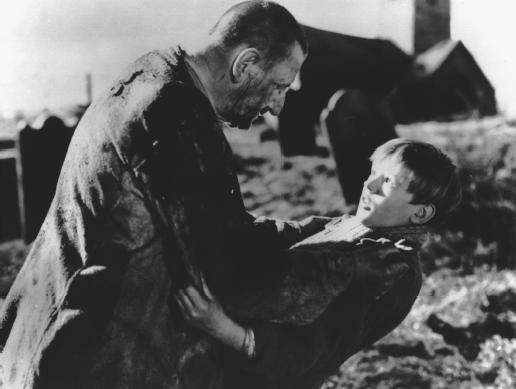
Movie scenes of novels: Snake Pit movie of Mary Jane Ward's semi-autobiographical novel; a strike in Zola's Germinal close third person); Great Expectations (Pip tells the story)..
(See my Review of The Snake Pit here.)
How you tell your story, and how we talk about novels (vocabulary and critiquing).
Presentation of Student Work for Critique
Presentation/Critique Schedule
For an overview of weekly topics, click here.
Homework and readings due by 2-19-25Writing assignments:
Write a physical description of a character using as many sense details as you can. Over-write a little. Focus first on what can be observed with the senses--especially those other than sight..
Things to consider: try to make it psychologically accurate--that is, not every possible detail, but maybe an over view first, or maybe a person entering the space. Notice clothing, posture, skin color, but also odor of perfume or cigars, etc. Who is telling this? A first person narrator? The main character from 20 years in the future?
NOTE: the writing assignment is due by midnight of the session it's due, in this case, Wednesday, February 19, 2025. It will be returned to you via e-mail before the next homework is due.
Reading Assignments Due 2-19-25:
Required:
Read the pieces for critique (arriving by Sunday night).
Here's a sheet to help people critique your passage. You might want to print out--use as a reference.
Read the first pages of the other students' novels. This is not for critique -- just for further introduction. What genre is the person writing? Is it heavy on description? Lots of dialogue? How is it told?
Optional Reading :
Read https://meredithsuewillis.com/How%20to%20Start%20a%20Novel.pdf
Read, If you haven't already, this excerpt from Ten Strategies:Click on "Read an Excerpt." If you have the book, you can read the full version In Ten Strategies to Write Your Novel, "Strategy 1: Separate Process and Product.")
Getting the right spacing between paragraphs in Word
Look over these copy editor's marks for times when you want to do hand written mark-ups--or understand the ones MSW puts on your pages!.
In Ten Strategies to Write Your Novel, read "Strategy 2: Taste It, Touch It Smell It..."
I. Business
Any questions about business?
Reminder: homework due in today won't be critiqued and returned till next week.
The responses to the critique pieces go to the writer.Total of thirty pages for me to go over includes presentations and homeworks--you can substitute; you can send one longer piece if you'd rather.
SIGN UP TO PRESENT! Several haven't yet. I'm about to start offering second slots, but I'd like those three people to get theirs first. Lia and Sofia get first dibs.
We need people for 2-26 and 3-5 !!!
Presenter work due Sunday night . Send to whole class.
Homeworks due by midnight of class day--send only to MSW.
Any more questions at this point?
Some formatting issues:
Double space your homework and presentation pieces (for readability)
Please give everything page numbers. Use narrative style (indented paragraphs), NOT block paragraphs, and no extra spaces between paragraphs unless you want them to indicate time passing or some other stylistic element.
Setting Word to get rid of the block paragraphing
Here's an example of how conventional narrative formatting should look:
Conventional Narrative formatting for fiction: From "The Two Lindas." Please note how as often as possible we use action instead of "said" with an adverb.
Thus,
I stepped in her way. “Linda?”
Her face pressed in close. “Linda?” she said. “Is that you, Linda?”
Instead of
“Linda?” I said, stepping in her way.
“Linda?” she said, her face pressing in close. “Is that you, Linda?”
II. The first pages you turned in. A Quick survey.
These are to be used as a way to get a quick idea of the kind of novel we're going to be reading.
It's fine to switch points of view, but try to stick with one for a chapter or a scene or at least a little while to avoid vertigo and/or whiplash.
Go over quickly--emphasis on POV.
III. A Few More Words on critiquing before we begin with the presentation pieces:
What are things you have found especially fruitful in critique sessions?
Not so much?
IV. PRESENTER ONE
Sofia
V. WRITE:
A Macro Exercise-- We've played around with this, but now I'd like you to scribble it down and include it as part of your homework. It helps me keep a sense of the whole work).
– The genre or type of your novel
– The length you guess it will be in the end ( 150 manuscript pages? 300?)
– How much you've actually written
– Point of view-how is the story told?
– One important conflictConflict is often thought of as a person against themself; or, a person against other individuals; or, a person against society; or even a person against natural forces (The Martian).
-- Writer's strengths
-- Writer's challenges (process or product)
VI. Go round on challenges in getting this novel written.
VII. BREAK
VIII. PRESENTER TWO
Lia
IX. WRITE:
Write a short action scene in your novel. Use the point of view you've been doing. The action can be as small as threading a needle or as large as a knife fight or a battle. Maybe the main character is running--from danger or to catch a bus.
-- Make what is happening (logistics) clear.
-- Keep the point of view clear: just what the main character is seeing, experiencing--or a long shot with the whole setting in an omniscient point of view.
Feel free--as always--to go off in any direction this takes you.
X. Share
XI. Homework and readings due by 2-26-25
Writing assignments:
1.--The Action scene with a clear point of view
Write a short action scene in your novel. Use the point of view you've been doing. This can be something full-bodied and active, or it can be tiny: threading a needle or a knife fight. Main character is running--from danger or to catch a bus.
Make it clear what is happening (logistics).
Also keep the point of view clear: just what the main character is seeing, experiencing--or a long shot with the whole setting in an omniscient point of view.
An action scene from a particular point of view
2. The Macro exercise:
– The genre or type of your novel
– The length you guess it will be in the end ( 150 manuscript pages? 300?)
– How much you've actually written
– Point of view-how is the story told?
– One important conflictConflict is often thought of as a person against themself; or, a person against other individuals; or, a person against society; or even a person against natural forces (The Martian).
-- My strengths as a writer
-- My challenges in getting it written
NOTE: the writing assignment is due by midnight of the week it's due, in this case, Wednesday, February 26, 2025. It will be returned to you via e-mail by the session after it's received.
Reading Assignments :
Required Reading:
Read the pieces for critique arriving by Sunday night.
Optional Reading :
Here's a sheet to help people critique your passage. You might want to print out--use as a reference.
In Ten Strategies to Write Your Novel, "Strategy 5: Master Dialogue and Scene."
Getting the right spacing between paragraphs in Word
Look over these copy editor's marks for times when you want to do hand written mark-ups--or understand the ones MSW puts on your pages!.
Also, go over the materials we touched on in class today, all linked below, especially if we didn't get to them in class:
Point of View Chart
Point of View examples
Point of View Problems
Point of view problem : The Kilted Warrior
Point of view problem: "The Thriller Bar Scene."
Session 3
2-26-25Dialogue & Scene I:
Dramatize versus Summarize
Movie scenes from novels: Tom Jones by Henry Fielding; Strangers on a Train from Patricia Highsmith novel);
Famous horizontal kiss in From Here to Eternity from James Jones's novel.Homework and readings due by 2-26-25
Writing assignments:
1.--The Action scene with a clear point of view
Write a short action scene in your novel. Use the point of view you've been doing. This can be something full-bodied and active, or it can be tiny: threading a needle or a knife fight. Main character is running--from danger or to catch a bus.
Make it clear what is happening (logistics).
Also keep the point of view clear: just what the main character is seeing, experiencing--or a long shot with the whole setting in an omniscient point of view.
An action scene from a particular point of view
2. The Macro exercise:
– The genre or type of your novel
– The length you guess it will be in the end ( 150 manuscript pages? 300?)
– How much you've actually written
– Point of view-how is the story told?
– One important conflictConflict is often thought of as a person against themself; or, a person against other individuals; or, a person against society; or even a person against natural forces (The Martian).
-- My strengths as a writer
-- My challenges in getting it written
NOTE: the writing assignment is due by midnight of the class day it is due, in this case, Wednesday, February 26, 2025. It will be returned to you via e-mail around the next class session.
Reading Assignments :
Required Reading:
Read the pieces for critique arriving by Sunday night.
Here's a sheet to help people critique your passage. You might want to print out--use as a reference.
Optional Reading :
In Ten Strategies to Write Your Novel, "Strategy 5: Master Dialogue and Scene."
Getting the right spacing between paragraphs in Word
Look over these copy editor's marks for times when you want to do hand written mark-ups--or understand the ones MSW puts on your pages!.
Also, go over the materials we touched on in class today, all linked below, especially if we didn't get to them in class:
Point of View Chart
Point of View examples
Point of View Problems
Point of view problem : The Kilted Warrior
Point of view problem: "The Thriller Bar Scene."
I. Business
SIGN UP TO PRESENT! Several haven't yet. Do sign up for a second presentation now, by e-mailiing me. Lia and Sofia get first dibs.
Presenter work due Sunday night . Is everyone getting the presentation pieces?
How many comments did you get from the class after your presentation last week? (Lia and Sofia)
Reminder: Non-evaluative Grade Information: if you don't want a grade, you must follow these instructions. Or get in touch with Kenneth French at kenneth.french@nyu.edu . Let me know if you are not taking a grade.
Small logistics example from homework (this is a typical process versus product situation):
Later that night, I found myself at Peter Hillary, our local bar on Montague Street a blockfrom the Courthouse. I was seated at a booth for four across from Terrence and Jackie. Thad slid into the fourth seat next to me.
When he entered the bar, applause and cheers erupted from the Democratic faithful. A forest of hands reached out to shake his hand as he made his way toward us.Edited for Logistics:
Later that night, I found myself at Peter Hillary, our local bar on Montague Street a blockfrom the Courthouse. I was seated at a booth for four across from Terrence and Jackie.
When Thad entered the bar, applause and cheers erupted from the Democratic faithful. A forest of hands reached out to shake his hand as he made his way toward us and slid into the seat next to me.
MSW Pet Peeve (This distinction is fading away in English, but I just want to remind you)
Lie versus Lay
– Today I lie in my bed; yesterday, I lay in my bed. In the past, I have lain in bed till noon.
– Tonight, I lay my pen beside my computer. Yesterday I laid my pen beside my computer.
– I lay the paintbrush on the table, and the paintbrush just lies there. But when I laid it down yesterday, it rolled off the table and lay on the floor.
Confused? Paintbrushes "lie" on the table or floor, but you "lay" the paintbrush down on the table. Then of course, it just "lies" there. It depends on whether there is an object to the verb.
The really confusing part is the past tenses: "I laid the brush down beside the paint, and it just lay there." One verb has an object; one doesn't. Many, many people do this in a grammatically incorrect way.
For those of you who hate grammar and don't really care, take heart: there is an excellent chance that in another ten or twenty years, usage will have changed entirely.
One current dictionary (Random House Unabridged Second Edition) explains, "...forms of LAY are commonly heard in senses normally associated with LIE. In edited written English, [however,] such uses of LAY are rare and are usually considered nonstandard."
In novel writing, this usually means to separate what is in the narration (the author's formal writing) and what people say without quotation marks.
II. WRITE
Today's general topic is dialogue and scene. Some of us are naturals at it, others, not so much. One technique for improving your dialogue writing is to forget everything but the words said, separating out the other material, the enrichment, as it were.
1. Write a short conversation from your novel that is only the words said, without even the names of the speakers.
2. Go over it, and add any/all of these or other things:
Setting
Action!
Narration
Descriptions of people, objects, anything
Tags (she said, he said, they murmured)
modifiers to the tags
inner monologue
3.Go back and cut everything that isn't interesting and/or slows it down.
III. Responses? Share?
IV. Presenter
Mark Walsh
V. Mini lecture on POINT OF VIEW
Why does point of view it matter? For the reader, it is our guide through the novel. For the writer, essential in deciding what to tell and how to tell it.
In the movies, the camera angle starts wide to establish where we are, or starts with a close-up of a face or an object. We do this in novels too, of course, but in general our strength is in creating a particular angle that expresses a character's way of moving through the world.
Sometimes we do it more or less objectively, omnisciently in the third person or the author's voice, and sometimes we let our character do the talking--narrate either in their own voice or through a close third person..
Films have the occasional voice over, but voice is one of the most flexible and essential of the novel's tools.
Here are some standard grammatical persons that often coincide, but not always, with Point of view:
Point of View ChartPoint of View examples
Matching Quiz: Match the numbered samples with the lettered Point of View in the second half.
1. In those days, students used to meet near the dog run in Washington Square Park.
2. I am writing this by hand in my sketchbook as I always do when something important has happened. I met a man--a boy! what is he? He's both--man and boy--how can such a jerk be so attractive?
3. It was my sophomore year when I met him, not my finest hour, as I had just decided to drop out of the pre-med program...
4. I am watching the golden lab chase the old lady's chihuahua. She screams. You'd think by now she would know better than to come at this hour. The woman next to me, though, is looking at me, not the lab.
5. Follow me through the great towers of Manhattan to that 19th century pile, that miniature Arc d' Triomphe, that overlooks crowds of students sprawled on benches enjoying the spring afternoon. Join me in looking closely at one young woman, hunched around herself, full of dark thoughts. She has just failed her organic chemistry test and is wondering if she should simply run away...
6. Well, you've got to picture me on a bench next to the dog walk where an annoying little cockapoo was yapping. I was in a foul mood..
7. She pulled her legs up on the bench and clasped her arms around them. There was a loud cockapoo yapping behind the fence, and she imagined closing her fists around its throat instead of around her knees...
A. Fictional Memoir
B. Sitting the fire listening to the story teller.
C. Fictional Diary
D. A telepathic tape recorder in my mind: you are reading the transcript.
E. An all-knowing friendly guide (a dramatized narrator) is telling you about these people and their lives.
F. I'm telling you my story over drinks in a bar or coffee at the kitchen table...
G. Very close third person.
Point of View Problems
Sarajane had been looking forward to being with Sam without any brothers or sisters or parents around. Her whole body was trembling with anticipation when the doorbell rang. She half stumbled in her haste, but caught herself and opened the door. There he was, not as tall as she remembered, but more solid, smelling of something sweet and clean. They both grinned happily.
He had never seen her looking so pretty. He loved the pinkness of her cheeks and her blonde hair swept back from her forehead and caught with some kind of bright colored plastic band. Her lips were plum and her breasts were even rounder. She felt her cheeks flush with pleasure.
“Come in, Sam,” she said.
Possible Solution:
Sarajane had been looking forward to being with Sam without any brothers or sisters or parents around. Her whole body was trembling with anticipation when the doorbell rang. She half stumbled in her haste, grabbed a quick look as she passed the hall mirror: she thought her cheeks were too pink, but she liked the fresh washed ash blonde of her hair.
She opened t he door, and there he was, not as tall as she remembered, but more solid, smelling of something sweet and clean.
They both grinned happily. “I’ve never seen you look so pretty,” he said.
She felt her cheeks flush with pleasure. “Come in, Sam,” she said.
VI. BREAK
VII. Discussion of a favorite or model novel-- and why!
VIII. Read a piece from a novel, View to the North by Edith Konecky
IX. Discuss
X. Mini-lecture on dialogue/scene
Dialogue is where the drama is-- conflict, confrontation, love!
It is also the closest thing to "real" time as anything in prose narrative. A sword thrust in fiction isn't much like one in life or movies. But dialogue is.
On the other hand, we have to make an illusion. The transcription of a real dialogue too long and boring. Our job is to create the illusion of people speaking.
So, as usual, the first thing is to get it down--as in the just-the-words writing exercise. As we begin to refine it, there are a lot of things to work on:
Dialogue Tags Try to minimize drawing attention to them for momentum and pacing of the story. Check out this article, if you haven't yet: Avoid Creative Dialogue Tag Syndrome."
Using accents & foreign languages in novels (just a couple of notes)
Dialogue is the dramatic heart of novels, but scene is the building block, the essential structure of a novel.
In common speech, "scene" is the place where an action or event occurs, such as the scene of the crime. It is also commonly used to refer to a public display of passion or temper as in, "She tried not to make a scene." It is also a sphere of activity, as when we speak of observing the political scene. In slang, it is a situation or set of circumstances– "a bad scene.
In theater, film, and novel, it is an essential unit of action. In drama, there is a new scene when a new character enters. The setting is fixed and the time continuous, usually "real" or natural time. In film, a scene is a shot or series of shots constituting a unit of continuous related action.
In the novel, it is above all a dramatized moment– shown, not told. It can include (and usually does) dialogue, but also monologue (thinking) description, action, etc. etc. The dynamics change. People talk and act. Something happens.
In fiction, while there are lots of things besides scenes– passages of narration and long internal monologues, for example– most writers eventually come to the point where they want to dramatize their story with a scene. Dialogue or other interaction between two or more characters often marks the heart of a scene. You can have pages and pages of narration, or pages and pages of the vicissitudes of one character's thoughts or suffering, but the building block of fiction is a series of scenes with connecting and surrounding material.
The sene is the way the story moves to its next level: this is where the other parts of the story come together; or, it may be the beginning of everything, after which the next parts deal with the repercussions of this dramatized part.
A scene is "dramatized," although not necessarily dramatic in the sense of having a lot of shouting or overt action. It generally demonstrates or "shows" rather than tells.
One excellent way to outline a novel is to list twenty or thirty scenes--and then write them.
XI. WRITE (Macro)
Three important scenes from the middle of your novels. Make them up if you don't have them yet.
XII. Assignments For next week:
Writing Assignments:
Finish the in-class dialogue that began with just the words said. Go over it, and add any/all of these:
Setting
Descriptions of people, objects, anything else
Tags (she said, he said, they murmured)
modifiers to the tags
inner monologue
Go back and cut everything that isn't interesting.
Or, as always, substitute a passage from your novel you want feedback on.
Reading/ Watching Assignments:
Student presentations coming by e-mail--Aleo Pugh & Taylor McEwan
Avoiding Creative Dialogue Tag Syndrome.
" Dialogue: The Spine of Fiction." (article by MSW about dialogue online).
Check out these Types of Discourse: all useful and common in novels and other conventional fiction..
A good example of a scene focused on dialogue: note that this one does NOT use conventional dialog punctuation! (optional)
Read possibly the greatest summary in twentieth century literature--told not shown!--from Virginia Woolf's To The Lighthouse, the death of Mrs. Ramsay. The bracketed "scene" is as Woolf wrote it. (optional)
Ten Strategies, "Strategy 5: Master Dialogue and Scene" (optional)
An eleven minute recorded mini-lecture by me on Scene (optional)
Session 4
3-5-25
Dialogue & Scene II

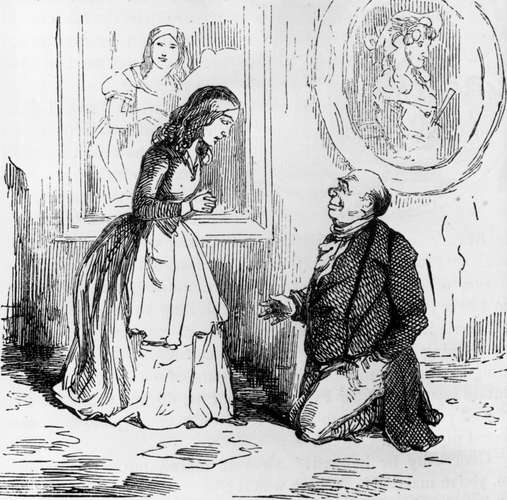
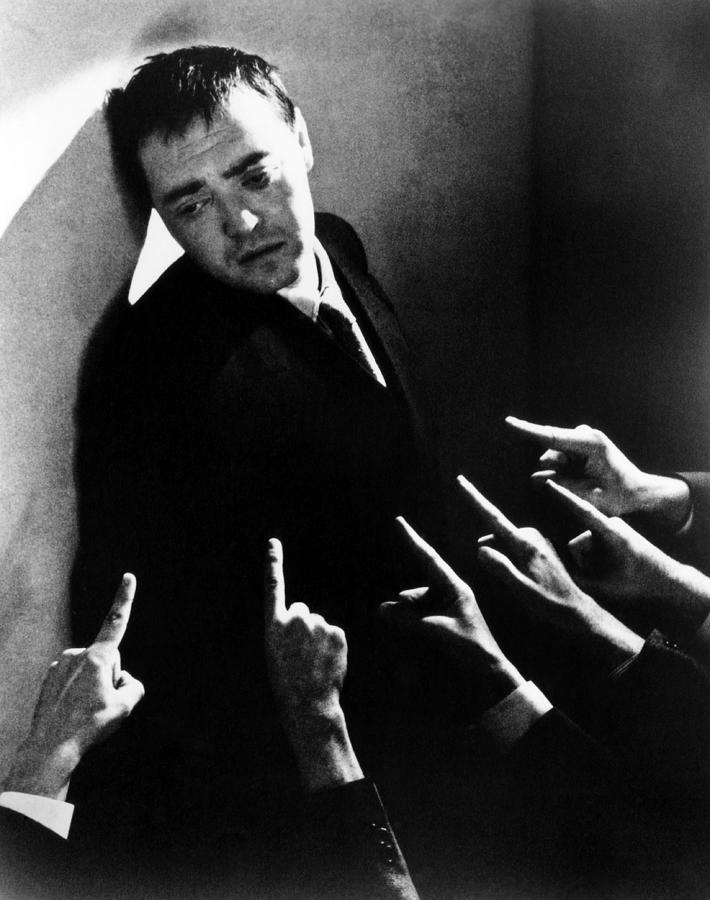
Humphrey Bogard & Ingrid Bergman in Casablanca; Illustration from Thackery's Vanity Fair;publicity shot from 1931's M with Peter Lorre as a child serial killer.
Assignments Due Today:
Writing Assignments:
Finish the in-class dialogue that began with just the words said. Go over it, and add any/all of these:
Setting
Descriptions of people, objects, anything else
Tags (she said, he said, they murmured)
modifiers to the tags
inner monologue
Go back and cut everything that isn't interesting.
Or, as always, substitute a passage from your novel you want feedback on.
Reading/ Watching Assignments:
Student presentations coming by e-mail--Aleo Pugh & Taylor McEwan
Avoiding Creative Dialogue Tag Syndrome.
" Dialogue: The Spine of Fiction." (article by MSW about dialogue online).
Check out these Types of Discourse: all useful and common in novels and other conventional fiction..
A good example of a scene focused on dialogue: note that this one does NOT use conventional dialog punctuation! (optional)
Read possibly the greatest summary in twentieth century literature--told not shown!--from Virginia Woolf's To The Lighthouse, the death of Mrs. Ramsay. The bracketed "scene" is as Woolf wrote it. (optional)
Ten Strategies, "Strategy 5: Master Dialogue and Scene" (optional)
An eleven minute recorded mini-lecture by me on Scene (optional)
NOTE: the homework writing assignment is due by midnight of the class day it is due, in this case, Wednesday, March 5, 2025. It will be returned to you via e-mail around the next class session.
I. Business
Check below (and please correct by e-mail to me) for a list of model novels recommended by this class.
Check the presentation schedule below. Have you scheduled your second presentation? Please do! Also, if you find mistakes, please correct me!
Please remember in all homework and presentation pieces:
-- use page numbers,
-- double space,
-- 1" margins,
-- standard narrative format (not block paragraphs),
-- your name on the first page
-- double space, but no extra spaces between paragraphs!Non-evaluative Grade Information: if you don't want a grade, ou must follow these instructions. Or just get in touch with Kenneth French at kenneth.french@nyu.edu Who wants a Non-evaluative grade?
Another Pet Peeve (but this one most people seem to be doing right)
Smirk I don't like using "smirk" as a cute little smile. I like to save it for an irritatingly smug, conceited, silly or evil smile. Think Alan Rickman as Hans Gruber in the first Die Hard movie.
II. Presenter One:
Aleo Pugh, Taylor McEwan
III. Write:
Put a bird in your novel. This could be a pet cockatiel; a jeweled humming bird pin; a street rat pigeon; a circling vulture overhead; the sound of a distant crow.
IV. Share a couple?
V. Go-round Discussion on how you make time/space for writing a novel.
VI. Break
VII. Presenter Two:
Aleo Pugh; Taylor McEwan
VIII. Mini-lecture material
A. On dialect and language in dialogue
What if all your characters sound the same? If everyone is a 1980's prep school student, maybe that is just fine.
Dialect Samples
Dialogue in Two Language
B. Scene & Controlling Time (summarizing some of what go short shrift last week)
Jane startles Mr. Rochester in Jane Eyre
Types of Discourse: all useful and common in novels and other conventional fiction.
Ways of controlling time
Scene is the essential building block of the novel.
In common speech, "scene" is the place where an action or event occurs, such as the scene of the crime.
It is also commonly used to refer to a public display of passion or temper as in, "She tried not to make a scene."
It is also a sphere of activity, as when we speak of observing the political scene.
In slang, it is a situation or set of circumstances– "a bad scene."
In theater, film, and novel, it is an essential unit of action. In drama, there is a new scene when a new character enters. The setting is fixed and the time continuous, usually "real" or natural time. In film, a scene is a shot or series of shots constituting a unit of continuous related action.
In the novel, a dramatized moment, quintessentially shown not told.
As I suggested, it is also one excellent way to begin to work on the structure of your novel.
Notes on Time
X. Assignments for Next Week
Writing Assignments for 3-12-25
Finish the scene with the bird in it.
Substitutions are, as always, welcome
Reading Assignments for 3-12-25
Read the work by three presenters arriving by Sunday night and give them a response.
If you have trouble punctuating dialogue, check out Reedsy's very short and practical rules here.
If you haven't read it yet, look over Ten Strategies to Write Your Novel, "Strategy 5: Master Dialogue and Scene" (optional)
Dialect Issues: Ed Davis's article in the Writers Digest's Blog about writing dialect. (optional)
10 Tips for Strong Scenes (from Masterclass.com (optional) I don't agree with all these tips, but they are worth considering to see if they work for you.
Session 5
3-12-25
Organizing Your Material:
Architectonics & Big Bins
(Structure One)

Structuring novels: Daniel Moynihan Station; bins; an archipelago
Homework due 3-12-15
Writing Assignments for 3-12-25
Finish the scene with the bird in it.
Substitutions are, as always, welcome
Reading Assignments for 3-12-25
Read the work by three presenters arriving by Sunday night and give them a response.
If you have trouble punctuating dialogue, check out Reedsy's very short and practical rules here.
If you haven't read it yet, look over Ten Strategies to Write Your Novel, "Strategy 5: Master Dialogue and Scene" (optional)
Dialect Issues: Ed Davis's article in the Writers Digest's Blog about writing dialect. (optional)
10 Tips for Strong Scenes (from Masterclass.com (optional) I don't agree with all these tips, but they are worth considering to see if they work for you.
I. Business
Take a look at our class's suggested model novels here.
A 4 question evaluation:
https://docs.google.com/forms/d/1LSxJfLdBDnDEpwlUraZswW6-jyksjnNa3uTkrKFTh5c/edit
If you don't like forms, please write me an email saying: (1) what you find most useful in this course; (2) what you find less useful, could do without, etc.; (3) specific topics to cover in the second half?; (4) anything else, suggestions, comments, etc.?
Check the presentation schedule below. Have you scheduled your second presentation? Please do! Also, if you find mistakes, please correct me!
II. WRITE
Department of Gross Generalizations: I've been finding in the homeworks excellent dialogue and engrossing stories, but some of you seem to avoid description. Description has a reputation for being somehow old-fashioned, weak, fluffy, boring, just "purple prose."
Rather, it seems to me, to be about the Concrete--grounding for the scene.
If you find the right detail (usually a sense detail and often found by over-writing and then cutting) it will cause the scene to take form around it, powerfully in your mind and thus the reader's mind.
WRITE: Think of a scene in your novel and describe an item of clothing a character (not the protagonist) is wearing: a hat, a high top sneaker with the laces undone; a fine shirt. Include colors, texture of fabric, condition (new old dirty clean)--anything concrete. Feel free to include squeaking leather, clinking bracelets, and odors. And realize you'll be cutting it by half or more.
III. Presenter One
Phillip Berroll; Jackie Celio; Kachi Iwu
IV. Mini-lectrures
A . Grammatical time: how to tell the story, tenses for flashbacks.
B. Frame/span Time:
Not grammar, but a way of thinking about your novel: The "present of the story" for your novel the farthest forward, where the story teller is standing. That is, if it is a first person novel, the narrator is (explicitly or by implication), say, age 45 looking back on her life when she was 8 or 23. If an omniscient story, the teller may be out of time, or it may be an "implied narrator" standing in a present and telling everything that happens up to that present.
In Edith Wharton's The Age of Innocence: a narrator is set firmly in a particular present, about 1920, telling about life explicitly in the 1870's. This one is unusually precise about the present, and the novel ends up in that 1920 present. A lot of what is going on in the novel is about the changes in upper class New York society between 1970 and 1920.
The present time of James Joyce's novelistic long story "The Dead" is the 5 or 6 hours of a party followed by a carriage ride to a hotel to sleep--but it is full of dialogue and dips into memory, flashback, and more. The flashbacks build up to a big one of the main character's wife's early lover--which is narrated in dialogue by the woman.
The present time in your novel might be the instant a man sits in the electric chair while the whole novel consists of being in his mind as he remembers how he came to this moment.
The present time could also be a never-named explicitly story teller relating events from a great distance: the bombing of a city followed by alternating passages close to various characters and how they experience the events.
Being aware of your present-of-the-novel helps especially with flashbacks. Note that even flash forward would not be beyond the narrator's present of the story--people might, of course, speculate about the future.
This is all closely related to point of view but it is also a useful way to structure your novel: being aware of "present time of the story" and keeping a chronology of events (again, whether or not you tell it in chronological order) can help you organize.
C. Thinking About Structure
I want to do this early to be sure I can say some of what I'd like to say about structuring, planning, outlining, and otherwise working on the Macro of your novel. We'll be working on structure this session and the next.
1. Architectonics...
... is a fancy word for the architecture, the macro structure of your novel, as this roof is structurally essential to Moynihan Station--Freitag's pyramid or whatever.
"Freitag's Pyramid," primarily a theater term, and think of. Think of it as a 3 or 5 act sketch of a story.
2. Big Bins
As you plan and structure your novel, think of big sweeping structures. This is not the best time to be clever. It is about large containers or bins to help clump the pieces together.
Some common and excellent forms would be large-pattern story arcs like (1) a life story or (2) how the character came to maturity (bildungsroman); or (3) the story of how an artist came to maturity (a kunstlerroman).
There are other big structures and arcs that can be excellent general forms for a novel, sometimes what I've been calling the Present of the story:
one summer;
a ski trip;
the arc of a friendship (Elena Ferrante's Naples novels);
a love affair;
a political event and its aftermath.
Consider that this biggest shape is NOT the plot or the story. A ski trip could have, as its plot, a murder mystery or the rise and fall of a love affair.
The importance of the big shape is that it helps you see your book as a whole, and it helps to group pieces and create the boundaries of your novel. It holds it all together.
You may use the big bins just for organizing, or they may become actual sections of your novel. Thus:
Part I--1908;
Part II World War Two;
Part III--the Sixties;
Part IV-- 2000;
Part V--the Present.
Or,
Summer
Autumn
Winter
Spring
Or,
Manhattan
Istanbul
Brooklyn
Or, make a bin for each important character (each section has a POV character for say 50 pages); always big stuff: time, place, human beings.
Then put all your material (scenes, notes, ideas, fragments, into the bins. You may discover that one is much fuller than you thought. Maybe, instead of Manhattan, Istanbul, Brooklyn , the story should be
Queens
The Lower East Side
The Upper West Side
Riverdale
3. The Archipelago Method
I've mentioned this before, and emphasized scenes as building blocks.
Collect the scattering of scenes you've written, and ideas for scenes you intend to write, and list them in a tentative chronological (or other) order like an Archipelago. This sailing from island to island along archipelagos or even greater distances is how the Polynesian explorers populated the Pacific.
So in the so-called Archipelago Method, you would draft many scenes, then go back, see the ordeer they should have, and then write any scenes you haven't written yet, then go back and make a draft of the novel from beginning to end, adding more scenes and connecting material when you need it or get a new idea.
Polynesian explorers navigated from island to island along archepelagos and even far greater distanes.
V. Presenter Two
Phillip Berroll; Jackie Celio; Kachi Iwu
VI. Break
VII. Presenter Three
Phillip Berroll; Jackie Celio; Kachi Iwu
VIII. WRITE
A Macro exercise: imagine that you are sitting around a campfire and it is your turn to tell the story. Tell the story of your novel as if it were a once-upon-a-time story. Once there was a girl who did not feel she was part of her family....
Try to keep it to a short narrative.
This is about getting a grip on your plot/story line.
IX. Homework for 3-19-25
Writing Assignments due 3-19-25
Finish the scene with the concrete piece of clothing.
Or substitute
Reading Assignments due 3-19-25
Read the presenters' work arriving by Sunday night.
Please do the Google Forms four questions
Go over the Mini-lectures for today on Time and Structure.
Strategy 6, "Structure Your Novel: Story, Plot, and Architectonics," from Ten Strategies to Write Your Novel. (OPTIONAL)
Session SIX
March 19, 2025
Novel Structure Continued:
Outlining--When and If
Homework for 3-19-25
Writing Assignments due 3-19-25
Finish the scene with the concrete piece of clothing.
Or substitute
Reading Assignments due 3-19-25
Read the presenters' work arriving by Sunday night.
Please do the Google Forms four questions
Go over the Mini-lectures for today on Time and Structure.
Strategy 6, "Structure Your Novel: Story, Plot, and Architectonics," from Ten Strategies to Write Your Novel. (OPTIONAL)
I. Business
Mid term evaluations:
1. NYU's Closes in Two Days:
Dear Meredith, The NYU SPS Midterm Course Feedback period for your course(s) below is closing soon.
Course Title Subject/Catalog # Section Novel Writing - Spring 2025, NCR (SP25:WRIT1-CE:9357:S:001) WRIT1-CE 9357 001 Please complete the midterm course feedback form through the NYU Course Feedback System.
2. MSW's
https://docs.google.com/forms/d/1LSxJfLdBDnDEpwlUraZswW6-jyksjnNa3uTkrKFTh5c/edit
If you don't like forms, please write me an e-mail saying: (1) what you find most useful in this course; (2) what you find less useful, could do without, etc.; (3) specific topics to cover in the second half?; (4) anything else, suggestions, comments, etc.?
Free from Authors Publish-- "a free talk with author and award winning educator John Claude Bemis. During this talk, John will show you key techniques for making your characters--in particular, your protagonist--utterly captivating for readers and publishers. Register to Watch the Talk (Free)
Class's suggested model novels for your reading list.
Presentation List: A few slots for very short (2 page) presentations. If you want one, e-mail me ASAP.
For Session 8 (two weeks): a short marketing/publishing/what-to-do-next session. Get questions to MSW beforehand.
A couple of things:
-- For those with ghosts in your novels: check out one writer's way of handling them in Lincoln in the Bardo by George Saunders (@2017).
-- Two random (but interesting IMHO) writing advice quotations:
Michael Connelly & John Gardner“I never have a word or page count,” [Michael] Connelly [Harry Bosch police procedurals] said. “What I like to do is move the story a step a day. It could be a chapter. It could be a good interchange of dialogue. It’s very amorphous. I just know if I write every morning I’ll have a book a year.”
and
John Gardner in The Art of Fiction: Notes on Craft for Young Writers writes about how “close third person” could be very distant or very, very close, and offered four examples from greatest “psychic distance” to the least:
1.) It was the winter of the year 1853. A large man stepped out of a doorway.
2.) Henry J. Warburton had never much cared for snowstorms.
3.) Henry hated snowstorms.
4.) God, how he hated these damn snowstorms.
5.) Snow. Under your collar, down inside your shoes, freezing and plugging up your miserable soul.
He cautions against zooming in and out of there various styles too often.
II. THINKING EXERCISE
A holdover from last week: Imagine that you are sitting around a campfire and it is your turn to tell the story.
Tell the story of your novel as if it were a once-upon-a-time story. Once there was a girl who did not feel she was part of her family....
Keep it short. This is about getting a grip on your plot/story line.
III. DISCUSSION
Share?
Did you learn anything about your story?
What are your structural problems, plans, challenges?
IV. Presenter One:
Mark Walsh, Sofia Treviño
V. Presenter Two:
Mark Walsh, Sofia Treviño
VI. BREAK
VII . WRITE
Your main character encounters something really frightening. Write about the moment of fear, concentrating on physical manifestations (dry mouth, prickles along spine).
The frightening thing can be a false alarm or even humorous (children in Purim costumes running down the street) or it can be an existential threat to life and limb or to the city or the world, or an internal monologue about a fear for the future or for the outcome of a medical test, etc.
VIII. SHARE
IX. Mini Lecture on the uses of Outlining: Whether, When, and What instead?
A. Forms of outlining
How many of already have an outline?When did you write it?
What form does it take?
Some Sample Outlines:
-- The earlier-tonight thought exercise-- a short narrative in story-telling form, for example, or the elevator pitch, or, 25-words-or-less, etc.
-- A Visual Outline: the "Penny Board"
-- Character Diagram Outline Time line outline
-- Hero's Journey
-- Nonfiction book Outline
-- Outline with a Map
-- Vision Board of a Novel using real-life materials to stimulate ideas
-- Running Outline
-- Word drawing Outline
-- Penny Board
-- A form that a writer created to help draft each chapter in the book.
– A diagram of characters outline
– "Stakes" Method of Outlining
B. I am personally partial to the four below.
But my main message to take away is that you should find what works for you, and YOU SHOULD OUTLINE AFTER YOU HAVE A FAIR AMOUNT DRAFTED.
A few we've already mentioned that I use often or occasionally:
– the Archipelago method I already talked about--drafting scenes through the whole book first.
-- the hypothetical method for creating story: you make up a hypothetical or test story with a beginning, middle, and end. Write as if that made-up story (or plot if you prefer) were your actual story, but be ready at any moment to change it This gives you a structure to work with (especially an end point) but gives preference to changes that your imagination might come up with.
– The chronological outline--useful in itself or as a supplement to other outlining and structuring methods.
– The "running outline," which is a daily record of progress and changes. I use these religiously, especially when I know I'm going to be pulled away from writing for a few days.
C: Finally, and I've already showed my hand on what I think about this--When do we outline?
If you like numbers, I'd say after you've drafted 50 to100 pages, as a way to see what you've got and where you're going. In other words, first write a bunch, maybe draft a final scene, then start thinking about structure.
Also, consider using the outline as a place for notes: changes in a character's profession, race of the character's bestie, etc.
XI. Assignments for 3-26-25:
Writing Assignments:
The scene with the frightening thing
Write a short outline of your novel using any of the methods we've discussed: Draw a picture, do a time line, a Venn diagram. Make up your own.
Substitute, of course.
Reading Assignments:
Read and respond to the presentation pieces coming to your in-boxes by Sunday night.
Check out the various types of outlines linked above in this class script.
Ideas on organizing a Best Seller from James Scott Bell, a thriller writer and lawyer (Optional)
Chapter on Outlining from Ten Strategies (Optional)
MSW article in Practical Writing on "The Raised Relief Map" (Optional)
Session seven
3-26-25
Things Movies Do Better Than Fiction
And Vice Versa
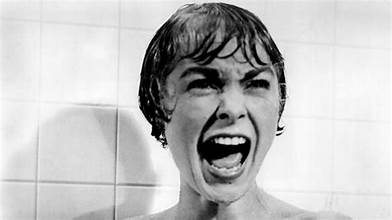
Close-up from Psycho, small action from The Godfather; long shots with terrific action: Mad Max:Fury Road; and North by Northwest
Assignments for 3-26-25:
Writing Assignments:
The scene with the frightening thing
Write a short outline of your novel using any of the methods we've discussed: Draw a picture, do a time line, a Venn diagram. Make up your own.
Substitute, of course.
Reading Assignments:
Read and respond to the presentation pieces coming to your in-boxes by Sunday night.
Check out the various types of outlines linked above in this class script.
MSW's article in The Writer "Techniques from Film."
Ideas on organizing a Best Seller from James Scott Bell, a thriller writer and lawyer (Optional)
Chapter on Outlining from Ten Strategies (Optional)
MSW article in Practical Writing on "The Raised Relief Map" (Optional)
I. BUSINESS
I'm not finding responses on my google form survey. Did people try to use it and fail???
Final calls if anyone wants a two page extra presentation
Next week: a short what-to-do-next-with-my-novel (marketing/publishing/) session. Get questions you'd like answered to me by the end of tonight please.
P.S. Writing is hard, with not much promised at the end.
II. PRESENTER ONE
Philip #1, Jackie #2, Lia #2
III. WRITE
The "Silver Screen" master exercise.
Especially good for logistics and large-motor action.
There are many ways to convey the scenes we see in our minds for our readers. (Note: again, this is revision stuff. Draft first!). Sometimes we do it with voices (I'm thinking of Aleo's book in this class, and Mark's). Sometimes we do it by giving visual sketches (obviously these things can be mixed up and should be). For example, back in Session II we had an in-class and homework with physical action.
Today, I want a reprise of this. In your work, I'm seeing a lot of excellent dialogue, conflict, use of senses, but sometimes some of you skip the physical action. So I want to focus here again, particularly with some movie techniques of scene setting and sequential action.
Here's a bit from Phil Berroll's homework:
https://www.meredithsuewillis.com/phil%20berroll%20action.pdf
Here's one, written to be turned into a movie:
Sample of large-motor action:
He slid out of the Humvee and took the rifle off the back seat. Carried it across rough earth to the coconut mat. Placed it gently with its bipod feet a yard back from the edge. Bent down and loaded it. Stepped back behind it and lined himself up and crouched, knelt, lay full length. He snuggled the stock into his shoulder. Eased his neck left and right and looked around. It felt like he was alone in the middle of nowhere. He ducked his head. Closed his left eye and moved his right eye to the scope. Draped his left hand over the barrel and pressed down and back. Now he had a tripod mount. The bipod, and his shoulder. Solid. He spread his legs and turned his feet out so they were flat on the mat. Drew his left leg up a little and dug the sole of his shoe into the mat's fibers so the deadweight of the limb anchored his position. He relaxed and let himself sprawl. He knew he must look like a guy who had been shot, instead of a guy preparing to shoot.
(Jack Reacher doing his thing)
I don't know if Mario Puzo planned the next passage from his novel The Godfather to be a movie scene, but it translated pretty seamlessly to the film:
Samples of small-motor action:
The Don, still sitting at Hagen's desk, inclined his body toward the undertaker. Bonasera hestitated then bent down and put his lips so close to the Don's hairy ear that they touched. Don Corleone listened like a priest in the confessional, gazing away into the distance, passive, remote. They stood so for a long moment until Bonasera finished whispering and straightened to his full height . The Don looked gravely at Bonasera. Bonasera, his face flushed, returned his gaze unflinchingly.
Madame Merle slowly seated herself, with her arms folded and her white hands arranged as a support to one of them and an ornament, as it were, to the other. She looked exquisitely calm, but impressively sad.
(Henry James)
The writing exercise:
This can be something new, or, perhaps, something you've already written.
Pretend you are watching a movie (in this case, the big screen, not a computer screen or even a 60 incher in your home. You settle back in your seat at the multiplex, the scene from your novel begins. Have it be something with several people, a family meal, a party, a street scene.
Camera comes in with a log shot showing the whole room or street (keep the point of view you are writing in, though: if it's Jenny in the tunnels under the hockey stadium, have Jenny do the scan with her eyes.) Next, come to a middle show, showing whole people or waist up. Then, have something happen. See it on the silver screen: who moves what first? Get size color motion. A close up maybe of faces.
Follow the action as if it had been filmed. Write in more detail than perhaps you usually would each movement and action.
You may cut a lot of this later, but use it now to clarify for yourself where the bodies are, who is on which side of the room.
IV. SHARE--discuss issues with the Silver Screen exercise?
V. Presenter Two:
Jackie #2, Lia #2
VI. BREAK
VII. MINI LECTURE: MOVIES AND NOVELS
A. For discussion of novels, it's sometimes useful to think/talk in terms of movie shots.
Middle shot; Close-up;Long or Establishing shot
From Here to Eternity; Hunger Games; The Good EarthHere are a few useful things to think about: Choose only the best parts of action, or what you need to clarify. Movies will always do action better, and panorama/long shots better.
B. We just did the Silver screen exercise:
I consider it a Master Exercise. After you've done the visuals, go back and add sounds -- sirens in background? Whoofs when someone gets punched? Using the silver screen in your mind can help you revise or draft by visualizing and being to pick out the best details to write.
-- Transitions This is one movies learned from 19th century novels, and novels may have the advantage. Imitate the movies with a jump cut instead of a long transition: just stop, put some extra white space, and move on to the next part:
Here's a sample jump cut:
Grimly, she put on her hat and coat and left the house. The man in the trench coat was waiting for her in the restaurant. He pulled out her chair.....
- Fade-in fade-out. Other film style transitions include the old-fashioned fade-in or dissolve (the picture fuzzes or smudges or fades and then comes back in a new time and place), or the voice-over orients us by telling us where we are, or today, a plain "Ten Years Later" title on the screen. That sort of transition works at least as well, and maybe better in fiction.
She didn't see him again until ten years later when she was working for The Times in Paris
- The movies often show their transitions with an establishing shot, which is simply a wide angle view that orients us as to where we are. Using this movie technique, you can give a lot of information with a brief setting:
Frankie drove down to the seedy waterfront neighborhood, passed the bar, and parked a block away.
Fiction, however, offers other economical ways to move to the next scene, and set it:
When he arrived at the Wharfrat Bar, Frankie slammed his fist on the bar and ordered a drink.
Frankie arrived at the Wharfrat Bar, still seething with anger, and ordered a drink.
The last time Frankie was in the Wharfrat Bar he had been with his best friend Bo, back before it all happened...
It's good to have a repertoire of different ways of compressing time and making a transition.
C. Continuity
In film, they have people who make sure the hero has the same color tee shirt if they have to shoot half a scene on another day. They check how many rose buds in the vase. Etc.
In novels, you don't have a continuity person. Use search in your word processor. Search for every time a character appears to check on hair style. Etc.
D. Finally, don't forget these important advantages fiction has over film:
- The intimate senses (smell, touch)
- Internal monologue
- Flashback--movies try it, but it works better in novels, because it is a natural and interior mental process.- Other forms of manipulating time: ellipsis, summary, scene, stretch, pause
VIII. Presenter Three
Jackie #2, Lia #2
IX. WRITE
Have your main character take a panning look around the place, room, street corner, vista of a mountain. Now have the character "zoom" in on some particular object or person or animal. Have them observe it in some detail. Have them go inside themselves and have an interior monologue. It could be planning for action or going into the past, reminded by the observed thing. Continue whereever this leads you.
X. DISCUSSION
First Go: Grounding? How are you making sure that your novel's world convinces the reader it is real? And this is equally important for Lia's fantasy world and Philip's Candyman future or Taylor's intense focus on an intimate daughter-father story.
XI. HOMEWORK
Assignments for 4-2-25:
Writing Assignment: Do Roman Numeral X above, even if we didn't get to it in class. Or, if you prefer, do the Silver Screen exercise.
Substituting is fine, of course.
Reading Assignments:
Read and respond to the presentation pieces coming to your in-boxes by Sunday night.
"Strategy Seven" and "Strategy Eight" in Ten Strategies (Optional)
Session 8
April 2, 2025
Thinking About Character;
What to Do Next with Your Novel

Assignments for 4-2-25:
Writing Assignment: Do Roman Numeral X or the Silver Screen exercise.
Substituting is fine, of course.
Reading Assignments for 4-2-25:
Read and respond to the presentation pieces coming to your in-boxes by Sunday night.
From Authors Publish "The Key to a Realistic Writing Plan."
Read MSW's article in The Writer "Techniques from Film."
"Strategy Seven" and "Strategy Eight" in Ten Strategies (Optional)
I. BUSINESS
-
Another way of dealing with a ghost: "Nectar," a story by John Colman Wood in Sun magazine.
-
Non-evaluative Grade Information: if you don't want a grade, you must follow these instructions. Or just get in touch with Kenneth French at kenneth.french@nyu
-
Three presenters next week: Phil, Aleo, and Taylor
-
Any business, issues?
-
First person: you don't have to have your narrator say, "I saw Jeri smile." Just go for "Jeri smiled," at least in most cases.
II. PRESENTER ONE
Linda #1
III. A Couple of sentences about Character
Worth taking a look at: one from the useful Reedsy.com and another from something called Scribophile. Also see Strategy 3 in Ten Strategies to Write Your Novel: "Character from the Inside Out."
I don't usually talk directly a lot about character, I think because at some level, I believe that's the whole ball game in novels. That is, whatever else you are writing about (solving murder mysteries, a religious epiphany, the Triangle Shirtwaist Factory Fire) you wouldn't be writing a novel if you didn't see these things playing out in terms of character.
"Character Arc" is one of those phrases made up for writing classes, IMHO. If you don't have a character going through some stuff, why do you call it a novel?
If you can have a character who changes internally, that's the arc, Or you can have a character who doesn't change much, and the things the person encounters are what it's all about. These are roughly character-driven novels and plot-driven novels.
My favorite ways to explore character (espec. minor character) are
-
Outside in (observation of action, physical detail, speech patterns: all the things you see from the outside in a movie.
-
Inside out ( special advantage of fiction) when you give thoughts, memories, monologues. Good for all characters, but especially try it for someone you're having trouble with.
Example: From Trespassers by MSW
Dickens and His Characters
IV. WRITE
A monologue for a minor character you aren't sure of yet.
Can you think of a way to work it into the novel? In dialogue? In an email or text?
V. SHARE
VI. BREAK
VII. PRESENTER TWO
Kachi #2
VIII. What to do When Your Novel Is Finished Mini-lecture
4-2-25 Add Social Media
A. Things to do/check out right now, while you're still drafting:
Jane Friedman's Start Here: How to Get Your Book Published.
Allison Hubbard's publication story of The Kelsey Outrage
Free AuthorsPublish 2024 Guide to Manuscript Publishers (mostly small publishers, but no agent required)
If your work is "literary," read some copies/subscribe to Poets & Writers
If you haven't looked at yet, I have a Resources for Writers Page (This page has a lot of stuff, not really organized. It is partly out-dated, but has an index and various good bits of information.)
B. Marketing and Publishing: A few general notes, but come back for the links on your own time.
1. Old ideal:
I write a novel, I send it around to agents. One takes me on and does all the business for me. No money passes hands.
The agent sends it to publishers; one editor acquires my manuscript.
The editor improves it ("edits!")
The publisher brings it out with publicity, at least a small tour.
We all makes some money; the publisher wants my next book.
This still sometimes happens. But...
2. There are many more models of publishing today--lines weakened between commercial publishing and so-called indie publishing (sometimes self-publishing, sometimes hybrid or subsidized or cooperative publishing). There are many models for publishing today, but making a living at it is less and less likely.
Now, even commercial publishers demand a "platform" and often payment for copy editing and publicity.
There is a great deal of competition for the entertainment dollar! Returning to the Chaucer/Shakespeare/Jane Austen? (See this short Ted Talk on publishing serially).
3. "Independent" publishing has replaced "self" publishing, and it is not looked down upon nearly as much. It probably should not be your first choice though. Also, many services like editing used to be done by commercial publishers, and people often hire them done now.
4. A Personal story: I have had various agents, but at present work without one. Even when I had a hotshot agent for 17 years, who placed my first novel with Scribner's, I placed my own children's novel and literary short story book on my own. The agent just went over contracts and took her cut.
I have never made a living as a writer. So, my publishing history includes:
three novels with a major literary/commercial NY publisher
Another major New York publisher for two children's novels
Several prestigious small and university presses (no advances, but do pay royalties)
A couple of micro-mini presses (one person operations)
A cooperative press where writers share work and pay their own expenses--republished out of print books.
6. The world of e-book publishing is a whole other kettle of fish: E-publishing is amazingly cheap, with often amazingly bad writing, and, especially with certain genres, has become a common outlet.
C. Give your first energy to getting your story and the words it's written with in excellent condition.
D. Then, as you approach the end, begin to do research. (check this out on your own)
Check out these Draft Notes on Getting Published (somewhat out-dated, but gives you the idea.
For an excellent outline on the basics of getting published, Jane Friedman's page and her blog.
Excellent general resources on places to submit, lists of writing programs and conferences and much, much more: NewPages.com and Poets & Writers. Also excellent site for general information (literary agents, for example,)is Duotrope.com.
Copyright: How do you prevent someone from stealing the ideas and content? Go online to http://www.copyright.gov for the latest information. HOWEVER, from the moment you finish a piece of writing, the government recognizes that only you can decide how to use it. The law presently governing this is the copyright law of January 1, 1978. A piece of writing is copyrighted the moment you create it. You may indicate your authorship with the word Copyright (or the c-in-a-circle sign), the year, and your name, but this is not necessary. Protection lasts for your lifetime plus 50 years. If your work is anonymous or pseudonymous, protection lasts for 100 years after the work's creation or 75 years after its publication, whichever is shorter. None of this holds in the case of writing-for-hire. You do not have to register your work with the Copyright Office to receive protection. If you want to, however, you may request the proper forms from the Copyright Office, Library of Congress, Washington, D.C. 20559
A Wall Street Journal article about Marlen Bodden, a former student in one of my novel classes who first self-published-- and then had her book picked up by a commercial press.
Here's a short paper on submitting to university presses by Danny Williams,
MSW's Resources for Writers has a lot of odds 'n ends--very slow to load, needs updating.
On Facebook, search for "Calls for submissions (poetry, fiction, art." Sign up to get notices
Notes on various types of publishing at Publishing Types and Print on Demand.
How long should a novel be? See notes on my Resources for Writers page.
A one-pager, somewhat out-of-date, of resources about getting published
See blog post by Veronica Sicoe on why she self-published.
Another good resource: An online magazine called AuthorsPublish at https://authorspublish.com/ Here's their free guide to traditional-style publishers who don't require agents.
Check out Jeff Herman's Guide to Agents.
Consider going to a writers' conference to make connections and learn more. Some people love these, but even if you don't, one conference should give you an overview and the vocabulary you need to proceed. And doing no writers' conferences is just fine too.
Check out Estelle Erasmus's podcasts at Freelance Writing Direct: Conversations with Authors, Journalists, Agents, Novelists, Memoirists, Niche Writers, Agents, and More! Estelle says, "All my podcast episodes are here: on iTunes, On YouTube and on my website
D. Questions?
IX. Homework for Next Week
Writing Assignments for 4-9-25
Monologue of a minor character--try to fit it into your novel.
Reading Assignments for 4-9-25
Read the work by three presenters arriving by Sunday night
Useful article on character from Reedsy.com (Optional)
Another from something called Scrdibophile. (Optional)
Also see Strategy 3 in Ten Strategies to Write Your Novel: "Character from the Inside Out." (Optional)
Also, obviously, go over the materials and links here on marketing etc.--feel free to copy. (Optional)
Session 9
Revision Two: Micro Revision of Novels
Writing Assignments due 4-9-25
Monologue of a minor character--try to fit it into your novel.
Reading Assignments due 4-9-25
Read the work by three presenters arriving by Sunday night
Useful article on character from Reedsy.com (Optional)
Another from something called Scrdibophile. (Optional)
Also see Strategy 3 in Ten Strategies to Write Your Novel: "Character from the Inside Out." (Optional)
Also, obviously, go over the materials and links here on marketing etc.--feel free to copy. (Optional)
I. BUSINESS
Two presenters next week: Philip; Linda; plus a very short piece from Jackie.
No work will be accepted after Wednesday, April 16, 2025.
Is anyone planning to send me a large stack/file of pages?
Before next week: final opportunity to send questions for things to cover.
- AND....
APRIL 10 IS POEM-IN-YOUR-POCKET DAY...Here are some activities:
1. Choose a poem you like.
2. Print it out and put it in your pocket.
3. Take it out and read it during the day.
4. Share it with friends--
5. Perhaps in person, maybe also on Facebook or Bluesky or Instagram. And,
6. ENJOY!
II. PRESENTER ONE
Phil
III. WRITE
Put something into your novel that grounds your story. This might be some piece of technology (a new i-phone?) a championship banner for some team? A newspaper headline? A hair cut that men avoid today? Or, in futuristic or fantasy writing, describe some future appliance or AI/robot.
This is using "material culture" to place your story.
Over-describe a little-- to bring you the writer closer to your time and place.
IV. SHARE
V. PRESENTER TWO
Taylor
VI. DISCUSSION (part 1)
Evaluating your character exploration.Last week's focus was on character, but I wanted to go a little farther, as a go-round: What are your challenges with a particular character or your characters in general. (This was one point of the monologue for a minor character assignment.)
For example, I'm polishing up a short middle grade fantasy novel for kids after a pretty rigorous treatment from one of my writers' groups. Three sibs (girl, boy,boy), and the middle boy's personality is a little fuzzy. In this draft I'm paying particular attention to him--usually via small things, like does he love horses or is he a computer kid and what is his favorite food? The youngest boy clearly is a pizza eater, and this has become a mild running joke.
VII. BREAK
VIII. PRESENTER THREE
Aleo
IX. Mini-lecture: Close revision for novels (Macro revision is next week)
First, keep in mind that (generally speaking) editing/close revision in novels comes later than it would in, say, a poem or flash fiction or short story.
Especially if you are a "pantser" rather than a "plotter."
(Pantser: Fiction writers, especially novelists, who write their stories "by the seat of their pants." The opposite would be a plotter, or someone who careful planning and outlining in advance to plot out their novels.)
Personal Story: I often observe myself as I write, especially when I'm beginning to come out of the trance at the end of a session. I do begin to tinker and change sentences, often using a little of that kind of work at the end of a session, or at the beginning, when I'm returning after a day or more off. In other words, I engage in the text, cutting, shortening, combining speeches, adding details, as a way of working myself into or keeping myself engaged with the text. So editing, for me, is sometimes part of the process.
The kind most of us think of, of course, is when you've laid your draft aside and come back. This is when you try to look at it from a distance: left brain over right brain. Reason over inspiration. Learn to be an editor!
Also, look at a very few specific examples (apologies to those who have seen this material before!):
Close Revision from Their Houses
Tense Revision.
Order of sentences
Tightening and Cutting
X. DISCUSSION (part 2)
Evaluating your character exploration, as above.
XI. WRITE (if time)
Put a spring celebration/religious celebration in your novel. I'm thinking Easter or Passover, but it could be anything. Perhaps your characters are celebrating, or perhaps the main character is feeling left out of, say, the chocolate bunny eating; or it can even be a brief part of the background--church bells, stacks of matzoh boxes in the supermarket.
XII. HOMEWORK for 4-16-24
A. Writing homework for 4-16-25: Choice:
Grounding exercise expanded
Spring celebration exercise
Or, a paragraph of your work that I marked. Send a revision BUT ALSO SEND THE MARKED UP PASSAGE.
Or, as always, substitute.
B. Reading Homework for 4-16-25
Presenter pieces for next week.
A close reading of a well-made first paragraph (Emily Temple on True Grit)
Go over anything in today's session to which we gave short shrift
Tyler's New Clothes
How some contemporary writers revise (from Lit Hub).Also, look at a very few specific examples apologies to those who have worked with me in the past):
MSW's article "Seven Layers to Revise a Novel"
"Strategy 10: Revise Your World" in Ten Strategies to Write Your Novel (Optional)
Session 10
4-16-25Revision Two: Macro Revision of Novels & Looking Ahead
Homework for 4-16
A. Writing homework for 4-16-25: Choice:
Grounding exercise expanded
Spring celebration exercise
Or, a paragraph of your work that I marked. Send a revision BUT ALSO SEND THE MARKED UP PASSAGE.
Or, as always, substitute.
B. Reading Homework for 4-16-25
Presenter pieces for next week.
A close reading of a well-made first paragraph (Emily Temple on True Grit)
Go over anything in the 4-9-25 session to which we gave short shrift
Tyler's New Clothes
How some contemporary writers revise (from Lit Hub).Also, look at a very few specific examples apologies to those who have worked with me in the past):
MSW's article "Seven Layers to Revise a Novel"
Writing Dialogue with a subtext (Optional)
"Strategy 10: Revise Your World" in Ten Strategies to Write Your Novel (Optional)
I. Business:
-- I won't accept any work for critique after midnight tonight, 4-16-25. If this is a problem, get in touch with me privately.-- This page will be available for you to read materials you missed and copy urls and .pdfs through June 16, 2025. If you copy the url, the page will still probably be available (but not linked from my website) even longer: https://www.meredithsuewillis.com/1-NYU%20Novel%20Writing%20Spring%202025.html
-- If you don't get your submitted samples back within two weeks, please e-mail me.
-- The next scheduled NYU Novel Writing class is September 10 - November 19, 2025. I have no immediate plans for a private class; however, I have a private classes page you can check if you care to.
-- Other places (or classes at NYU) people have studied writing that they recommend? (Also take a look at my Resources for Writers page).
II. WRITE
Your main character observes another character's storage area: an open drawer or safe; a cave or hole in the ground; a big storage cubicle or a medicine cabinet. Describe it with too many details. What do you the writer and your character learn about the other character? Is there some plot point to add? Continue if time with another person arriving or the next scene.
III. Share.
IV. Presenter I: Philip Ai
V. Begin Discussion of What you'll do next (Part I)
Thought Exercise/Discuss
Where will your novel be---on summer solstice 2025? or at Thanksgiving 2025? This time next year?
Do you plan to take conferences, classes? A month in a cabin? Write every morning at 5 a.m.?
VI. Break
VII. Presenter II: Jackie Celio
VIII. Mini-Lecture: Revising Novels
A. Overview:
Before you do anything else, get a lot written. That is, DRAFT A LOT. if you need to revise as you go, do it, but be sure you move forward. Polish at this stage less than you may want to. Going over what is written is reassuring. We know how to make it better. Voyaging out with new material if scary, and you need a lot of material for a novel.
Get something at least roughly novella-sized written before you make final decisions or start a second draft. That would be maybe 30,000 words or 100 pages.

Here is a gross over-simplification of my process:
-- I get a little idea. Over time, I scribble it down on paper or type it into my journal: a scrap of dialogue or a paragraph or just a title or bit of description. Other things (memories, stories I've heard people tell, contemporary events, books and movies) may accumulate around it.
-- Often months or even years later, after I've finished what I'm working on, I draft at least fifty to 100 pages. I think of this as a "super rough" draft or just a very long note.
-- Then I lay it aside a while and work on something else. Then I do what I think of as a "real" first draft. I go through it again, adding and enriching and expanding and coming up with an ending, even if it's only a hypothetical one.
-- I do a second draft, moving things around to find the best order, considering rising action, raising the stakes, story arc, climax (es), etc..
-- The next draft--and in many cases drafts-- I go through again cutting and tightening.
-- Go through for housekeeping. Clean up grammar, continuity, etc.
-- Let it sit, maybe a long time.
-- Go over it again think about audience at least partly. Cutting and tightening, respecting your audience's time!
-- Let it sit again.
-- Get other people to look at it, in whole or in part.
-- Go through it again.
B. Macro Revising
Here are some other thoughts, just on macro revising of a novel. You may or may not be ready for this.
Here's a good article from Matt Bell: "Eight Final Revisions to Try Before You Submit." A lot of this is probably more appropriate for short stories, but I especially like these two ideas:
1) Go through only the dialogues--all of them, in the entire manuscript.
2) Go through the whole manuscript and cut the weakest sentence from every paragraph (I'd suggest picking one chapter or section to try this on).
I also want to note his names for types of revision:
"generative revision" -- moving from drafting chaos to new ideas, rough order, new typing!
"narrative revision" -- moving to structure--finding the story arc?
"polishing revision." lots of editing and polishing approaches: reading backwards, reading aloud, etc.
C. Seven Layers of Revision
Sorry about the visual pun: I just like birds.
Some of you have already read the full article "Seven Layers to Revise a Novel." For tonight, I just want to point out a couple of crucial "layers:"
1. Do a revision from the middle or three-quarter point. This will focus you on the final sections which often don't get the close attention the beginning does.
2. Do a proper name/character check. Search for every appearance of an individual character or city or dog or club or church. Choose anything with a proper name. Read just those parts for what information you have included and (especially) what details of description.
Did you leave out anything important?
Have you repeated?
Can you spread out the descriptive details over the various appearances?
With a character, can you modulate the information and change?
In other words, focus on one thread, a person or whatever, and see how it arcs through the entire novel.
3. Check for "Continuity." You can do this at the same time as you do #2. Check for the hero's eye color. Does it stay chocolate brown? or turn steely gray fifty pages in? This is part of housekeeping, and since you are the whole crew for your novel, you're responsible for all the details.
4. Do a reading at a reader's pace, sitting on your hands so you don't tinker. Only take notes at chapter or section breaks. This takes great discipline!
D. A One Page Check List of Novel Revision ideas
One page list of novel revision suggestions.
IX. Continue Discussion, if needed, of What you'll do next (Part II)
X. WRITE
Nineteenth century novels (and other books) were often illustrated. Frequently, the first illustration was a "frontispiece--" an illustration facing the title page of the book. It might be an image of the writer in nonfiction (Frederick Douglass in his Autobiography), but for a novel it would most likely be a dramatic scene.
If you were choosing a scene from your novel to have illustrated in this way, what would you pick?
Describe the scene.
XI. Share.
XII. "Homework"
A funny poem about critiquing in a workshop.
Here are some starters and restarters to try if you are away from your novel for a while or get stuck. Most of them are common objects or situations to put in your novel and see where they take you. Print out or download the .pdf and keep it handy. Make up your own.
Just for fun: Fifty-very-bad-book-covers-for-literary-classics.
XIII. Farewells!
Stay in touch with each other!
Stay in touch with me!
Consider yourself part of the great fellowship of writers: we should support each other by reading widely and outside our comfort zones.
Especially, we should help each other out by buying/borrowing books and writing brief Amazon reviews.
List of Presenters
If you are presenting, please get the piece to the class by midnight on the Sunday before your presentation.
Session 2. 2-19-25
1.Lia
2. Sofia
Session 3. 2-26-25
1.Mark Walsh
Session 4. 3-5-25
1.
Aleo Pugh #1
2. Taylor McEwan #1
Session 5. 3-12-25
1.Philip Berroll #1
2. Kachi #1
3. Jackie Celio #1
Session 6. 3-19-25
1.
Sofia #2
2. Mark #2
Session 7. 3-26-25
1.Lia #2
2. Philip Ai #1
3.Jackie Celio #2
Session 8. 4-2-25
1.Linda Atlas #1
2. Kachi #2
Session 9. 4-9-25
1.Philip Berroll #2
2. Aleo Pugh #2
3. Taylor McEwen #2
Session 10. 4-16-25
1.
Philip Ai #2
2.Jackie Celio (extra 2 pp)
A List of model Novels from the Spring 2025 Novel class:
Speak Laurie Halse Anderson
Pride and Prejudice Jane Austen
Rebecca Daphne Du Maurier
The Virgin Suicides Jeffrey Eugenides
As I Lay Dying William Faulkner
The Great Gatsby F. Scott Fitzgerald
Washington Square Henry James (also check out Age of Innocence by Edith Wharton--MSW)
A Brief History of Seven Killings Marlon James
Portrait of the Artist James Joyce
The Analyst John Katzenbach
Carrie Stephen King
Great House Nicole Krauss
Lady Chatterly's Lover D.H. Lawrence
Zami Audre Lorde
The Golden Compass Phillip Pullman
Catcher in the Rye J.D. Salinger
On Beauty Zadie Smith
White Teeth Zadie Smith
The Feast of the the Goat Mario Vargas Llosa.
I Am the Messenger Markus Zusak
Dashes in dialogue is commonly used in Bulgarian, French, Greek, Hungarian, Polish, Portuguese, Romanian, Russian, Spanish, Swedish, Turkish, and Vietnamese.
Below this line: NYU policies and rules.
Various NYU Policies
Here is the official NYU Syllabus as it appears on Brightspace.
For full links, see the version on Brightspace
.
Description of course(See below for more details. This is what is on NYU's website:)
Beginning with a discussion of the basic elements and structure of novels, the class will include instruction and exercises for anyone just getting started as well as a serious exploration of how to organize novels and other long prose narratives for those writers with projects already under way. Writing exercises will cover shaping, establishing tone, exploring character, tightening and enriching dialogue, and working with interior monologue. Topics for discussion will include sustaining interest for the writer as well as the reader, making a place in your life for your novel, and highlighting what novels do that film can't. We will look closely at up to 50 pages of manuscript from each participant. For the first class, bring 15 copies of a one-page writing sample. For those with longer or revised manuscripts, this course may be repeated. This syllabus will be updated regularly online, so please check this website at least once a week at https://meredithsuewillis.com/NYU%20Novel%20Writing%20Fall%202023.html.
"Learning Outcomes" (This is what it says on the NYU website)
YOU'LL WALK AWAY WITH...
• Instructor critiques of your writing
• Knowledge of the editing and publishing processI would add that by the end of this course, students will have lengthened their novels and gained insight into how to continue and deepen their fiction.
Communication
Start with e-mail or a conversation during the Zoom session. Check frequently for changes in the plans.
Structure | Method | Modality (Whatever that is)
This distance/Zoom class uses short homework assignments, in-class writings, class discussion and regular critique. Please check the class website at
https://meredithsuewillis.com/NYU%20Novel%20Writing%20Fall%202023.html at least weekly for changes.
Tentative Outline of Weekly Topics (Subject to change depending on student needs)
Week 1. 9-13-23 Essential Importance of the Senses for writer and reader. Places, People.
Week 2. 9-20 Point of View. Presentation of Student Work for Critique
Week 3. 9-27 Dialogue and Scene I: Writing Vivid Dialogue. Presentation of Student Work for Critique
Week 4. 10-4 Dialogue and Scene II: Scene & Dialogue II: Group Scenes; Dramatize versus Summarize; Monologue (inner speech). Presentation of Student Work for Critrique
Week 5. 10-11 Structure I: Conflict and Story Arc (compare to Plot). Logistics. Presentation of Student Work for Critrique
Week 6. 10-18 Structure II: When, How, & If to Outline. Presentation of Student Work for Critrique
Week 7. 10-25 Things Novels Do Better than Movies and Things Novelists Can Learn from Film. Physical Action. Presentation of Student Work for Critrique.
Week 8. 11-4 Arc of Character and Minor Characters. Presentation of Student Work for Critrique
Week 9. 11-8 Revision I: Revising Novels. Also, what do you do with your novel once you've finished writing it? Presentation of Student Work for Critrique
Week 10. 11-15 Revision II: Diction and Fine Tuning. (Final Session) Presentation of Student Work for Critrique
Expectations
Homeworks are due as described on syllabus, but subject to change. Substitutions are allowed for those who already have drafts and portions of drafts. See website for updates. Attendance and class participation are expected, as is responding to the work of other class members and presenting your own work. Do all readings that aren't marked optional. See class page for details.
Communication Policy
Communicate with the teacher via her e-mail: meredithsuewillis@gmail.com. She tries to get back promptly.
Learning Environment
NYU says, and how could I not agree? "You play an important role in creating and sustaining an intellectually rigorous and inclusive classroom culture. Respectful engagement, diverse thinking, and our lived experiences are central to this course, and enrich our learning community."
Participation
You are integral to the learning experience in this class. Be prepared to actively contribute to class activities, group discussions, and work outside of class.
Assignments and Deadlines
Please submit all assignments in a timely fashion. .If you require assistance, please contact me BEFORE the due date.
Course Technology Use
We will utilize multiple technologies to achieve the course goals. I expect you to use technology in ways that enhance the learning environment for all students.
Attendance
I expect you to attend all class sessions. Attendance is part of my grading system.
More on Textbooks And Course Materials
There will be regular links to online readings.
The instructor's book Ten Strategies to Write Your Novel is optional. ((Available NYU Bookstore, from the publisher (montemayorpress.com, and from all the usual online suspects including Bookshop.org.)
Grading | Assessment
NYU's policy is now that grading is the default. You definitely need a grade if you are going for the Storytelling Certificate. If you do not want a grade, get in touch with Kenneth French (kenneth.french@nyu.edu) for a form to fill ot.The assessment is through interactive critique of your work. You are expected to attend and participate.To earn a B, you must turn in at least 30 pages, attend at least 8 of 10 sessions, and present your work at least once as well as showing evidence of having read other students' work. To earn an A, you must turn in 45-50 pages, attend at least 9 of ten sessions, and present your work at least twice to the group as well as respond and show evidence of having read the other students' work.No letter grade will be given below a B.
It should be noted that all NYU policies on academic integrity, i.e., plagiarism, are fully in effect in this course.
Disclaimer: Syllabus is subject to change due to current events, guest speaker schedule changes, and/or level and interests of students.
Here is NYU's SPS Continuing Education Grading Scale
A 93-100 4.000 Excellent: Earned by work whose excellent quality indicates a full mastery of the subject and is of extraordinary distinction.
A- 90-92 3.667 Excellent: Earned by work whose excellent quality indicates a full mastery of the subject.
B+ 87-89 3.333 Good: Earned by work that indicates a very good comprehension of the course material, very good command of the skills needed to work with the course material, and indicates the student's full engagement with the course requirements and activities.
B 83-86 3.000 Good: Earned by work that indicates a good comprehension of the course material, good command of the skills needed to work with the course material, and indicates the student's full engagement with the course requirements and activities.
B- 80-82 2.667 Good: Earned by work that indicates comprehension of the course material, command of the skills needed to work with the course material, and indicates the student's engagement with the course requirements and activities.
C+ 77-79 2.333 Satisfactory: Earned by work that indicates an adequate and satisfactory comprehension of the course material and the skills needed to work with the course material, and indicates the student has met the requirements for completing assigned work and participating in class activities.
C 73-76 2.000 Satisfactory: Earned by work that indicates a satisfactory comprehension of the course material and the skills needed to work with the course material, and indicates the student has met the basic requirements for completing assigned work and participating in class activities.
C- 70-72 1.667 Satisfactory: Earned by work that indicates a minimally satisfactory comprehension of the course material and the skills needed to work with the course material, and indicates the student has met the minimum requirements for completing assigned work and participating in class activities.
D+ 65-69 1.33 Passing: Earned by work that is unsatisfactory, but that indicates some minimal command of the course materials and some minimal participation in class activities that is worthy of course credit toward the degree.
D 60-64 1.000 Minimum passing grade: Earned by work that is unsatisfactory, but that indicates some minimal command of the course materials and some minimal participation in class activities that is worthy of credit toward the degree.
F Below 60 Failing: Demonstrates minimal to no understanding of all key learning outcomes and core concepts; work is unworthy of course credit towards the degree.
Here is a synopsis of my class expectations:
· This class welcomes beginning novelists, but is also aimed at writers who are well-underway on a novel and need further discussion and stimulation to continue or restart. We will cover a lot of basics fast, beginning with a survey of common terms for discussing novels and a look at novel structure in general. If you feel you need more of the basic terminology and ideas, please take a look at the teacher's book, Ten Strategies to Write Your Novel.
· For those with longer or revised manuscripts, this course may be repeated.
· This syllabus will be updated regularly online, so please check this web page at least once a week. Access to the website is also available from MSW's home page. Look at the top left.
· All writing and presentation selections should be from the novel you're working on.
· During the course, you may bring a total of up-to 50 manuscript pages for critique (some of these pages will be for the whole group, some only for the teacher). Assignments are optional and go only to MSW. Anything you turn in to MSW, however, including the presentation pieces and optional homework, counts towards the total of 50 pages to be reviewed during the semester.
· Please be prepared to discuss the work of classmates when they present.
· When you present to the whole class, get the piece to the at least 5 days before the class.
· Presentation pieces go to the instructor and whole class. Homework assignments go only to the instructor.
· You will receive a grade for this course unless you request a NonEvaluative mark. For the Non-Evaluative, please see the attached form. A copy of this request must be filed with the department. Send it by e-mail to kenneth.french@nyu.edu.
· No letter grade will be given below a B. To earn a B, you must complete 50 pages to the professor's satisfaction plus present work for critiquing by the class at least once. To earn an A, you must complete the 50 pages, present work for critiquing by the class at least twice, show evidence of having done any outside reading, plus participate fully in class discussions.
Here are various other policies of mine and NYU's:
NYU Policies: NYUSPS Policies regarding the Family Educational Rights and Privacy Act (FERPA), Academic Integrity and Plagiarism, Students with Disabilities Statement, and Standards of Classroom Behavior among others can be found on the NYU Classes Academic Policies tab for all course sites as well as on the University and NYUSPS websites. Every student is responsible for reading, understanding, and complying with all of these policies. The full list of policies can be found at the web links below:
University: http://www.nyu.edu/about/policies-guidelinescompliance.html
NYUSPS: http://www.nyu.edu/about/policies-guidelinescompliance.html
Subscribe to Meredith Sue Willis's Free Newsletter
for Readers and Writers:
Please fill in your e-mail address
to receive Books For Readers NewsletterE-mail address: Subscribe Unsubscribe
Send mail
• What's On This Site • Information about MSW • Resources for Writers • Tips for Writers
• Samples of MSW's Writing • Articles for Writers • For Teens • News About MSW • For Kids
• For Teachers • Home • MSW's Books • Newsletter • Free Writing Exercises • Online Writing Classes
Home
